If you’ve been in the ornamental landscaping game for any amount of time, you’ve probably figured out that pine trees are quintessential coniferous evergreens.
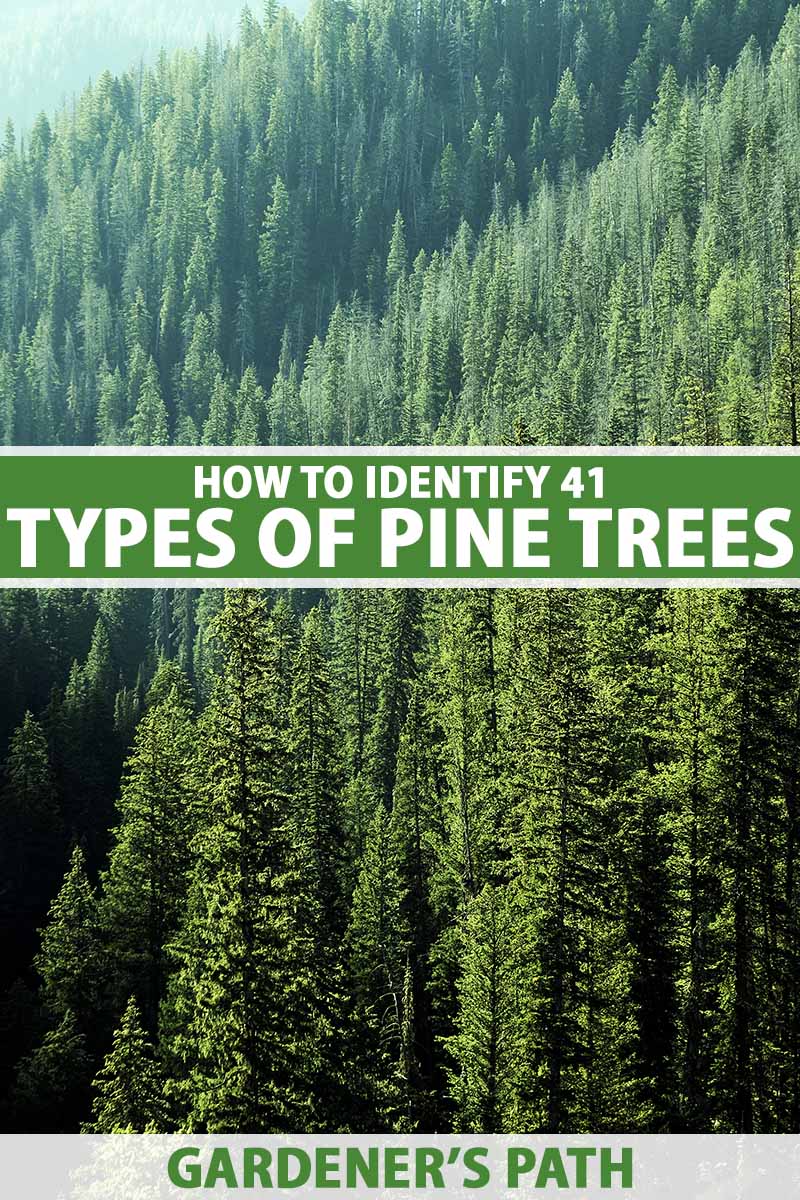
We link to vendors to help you find relevant products. If you buy from one of our links, we may earn a commission.
Along with flaunting aesthetic beauty, pines are ecologically important, culturally significant, and the edible pine nuts of some species are an essential ingredient in pesto sauce, a condiment that never fails to improve the taste of plain pasta.
Featuring at least 180 species, the Pinus genus, from the Pinaceae family, is a fantastic place to look if long-lived conifers with needy evergreen foliage are what you’re after. From the pines out in the landscape to the ones decking the halls ’round Christmas time, there’s many a Pinus to enjoy.
In this guide, we cover 41 different kinds of pine trees and touch on the features that make them special and readily identifiable. Depending on your landscape’s location, you won’t be able to grow them all – but you’ll certainly want to.
Here’s the list of said pines that we’ll cover up ahead:
41 Notable Pine Varieties
1. Aleppo
Hardy in USDA Zones 9 to 11, P. halepensis hails from the Mediterranean region of Europe, but it’s also cultivated in the United States.

With an upright, rugged, and irregularly-branching habit, this tree has a mature height and spread of 50 to 80 feet, narrow two- to four-inch reddish-brown cones, and two- to four-inch bright green needles in bundles of two.
An especially heat-resistant conifer, the Aleppo pine was thought to be cut down and decorated by Ancient Greeks every year, a ritualistic tradition that early Christians adopted for their Christmastime celebrations.
That’s right, folks – you’re probably looking at the first ever Christmas tree!
2. Austrian
Also known as the European black pine, P. nigra typically reaches 40 to 60 feet in height and 20 to 40 feet in horizontal spread, with a densely pyramidal form in youth that becomes broader and more flat-topped with age.
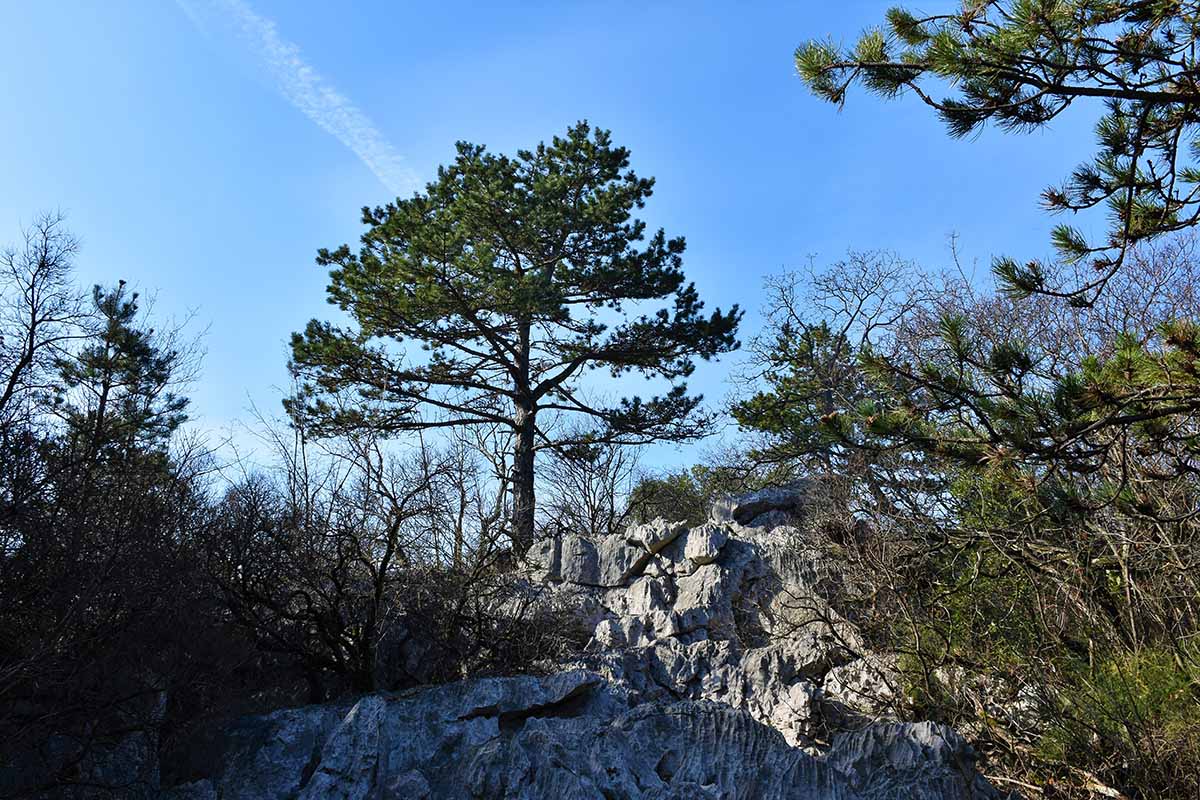
Native to central and southern Europe and hardy to USDA Zones 4 to 7, the Austrian pine grows two- to three-inch, egg-shaped, brown cones alongside light green needles in bundles of two that are four to six inches long.
This tree is very tolerant of urban conditions, seaside exposure, and a variety of different soils.
All in all, its aesthetic and stiffly-needled form makes this tree a wonderful specimen or wind-breaking screen.
P. nigra is available in #2 and #5 containers from Nature Hills Nursery.
3. Balkan
As you could probably guess, P. peuce hails from the Balkan Peninsula in Europe.
A hard-to-find plant in US cultivation, the Balkan pine reaches heights of 30 to 60 feet and spreads of 20 to 25 feet.
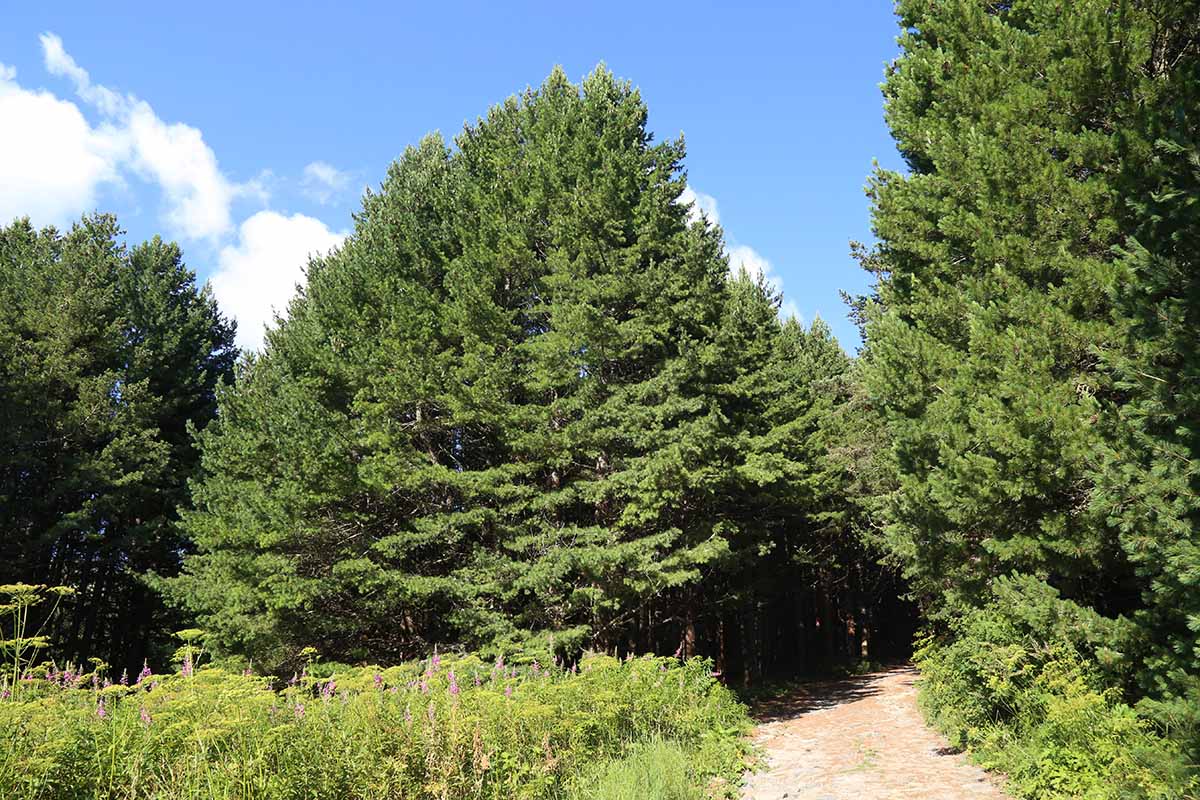
Its narrowly pyramidal to columnar form tends to become more open with age, and the upwardly-angled branches tend to level out with maturity as well.
Best suited to USDA Zones 4 to 7, this tree flaunts needles in groups of five that are three to four inches long, with dark green tops and grayish-green undersides.
The cylindrical cones are three to six inches in length, light brown in hue, and quite resinous.
This tree is a very handsome plant that’s fit for displaying proudly as a specimen, but your biggest challenge as a gardener will probably be procuring one in the first place.
4. Bristlecone
Found in the southwestern United States at high altitudes, bristlecone pines are reputed to be the longest-living plant species on Earth – some specimens in the Great Basin region of the American West are actually estimated to be at least 5,000 years old!

The term “bristlecone pine” actually covers three different species of Pinus: P. aristata, P. balfouriana, and P. longaeva, each with the subtlest of morphological differences that barely warrant differentiation.
Depending on their age and growing site, they can reach heights of 20 to 60 feet, with an irregular spread and open form.
Bundles of five inch-long needles grow from the gnarled branches, blue-green in color and coated with dots of white wax. The cones are brown, two to four inches long, and shaped like fat cylinders.
If you’re in the right spot, you’re more than welcome to try and grow these plants for yourself, but you’ll have to charge your descendents with caring for them once you’re gone.
Reaching a mature size is gonna take a while – believe it or not, a 1,000-year-old bristlecone pine is still regarded as a juvenile!
5. Canary Island
Pine trees aren’t usually thought of as tropical plants, but P. canariensis proves that stereotype wrong.
Native to the Canary Islands off the coast of northwestern Africa and hardy in USDA Zones 9 to 11, this upright, conical tree reaches mature heights of 50 to 90 feet with a spread of 20 to 35 feet.
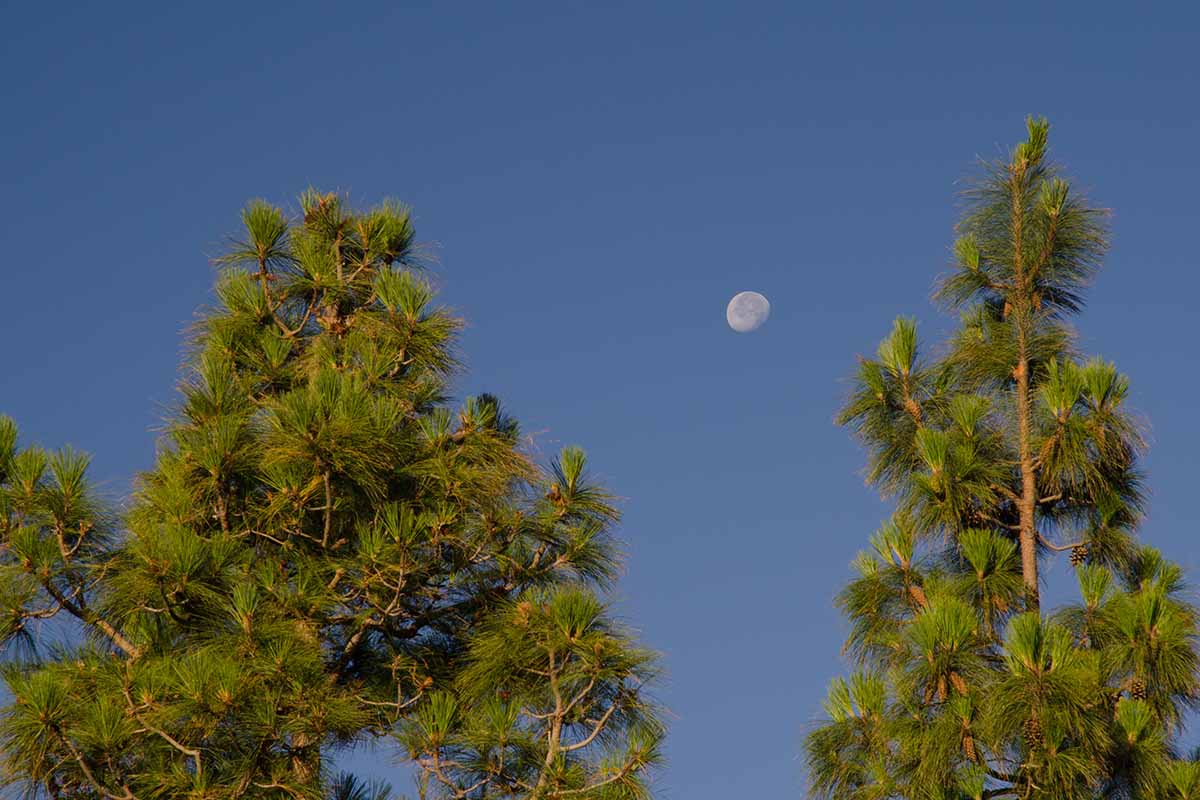
The tree wields slender, bright green to yellow-green needles, each eight to 12 inches long and borne in bundles of three. It also produces brown, oval cones that are six inches long.
A fast-growing tree, this species provides a beautiful form of protection from sun and wind in the landscape.
In its native sites, this tree increases ambient irrigation by way of fog drip, and the fallen leaves of the plant come in handy when packaging banana exports!
6. Chinese White
Another uncommon pine, P. armandii has very striking cones and needles.
The former are brown, broad, and four to eight inches long, while the latter are borne in clusters of five and four to seven inches in length, with glossy green outsides with gray-green insides.
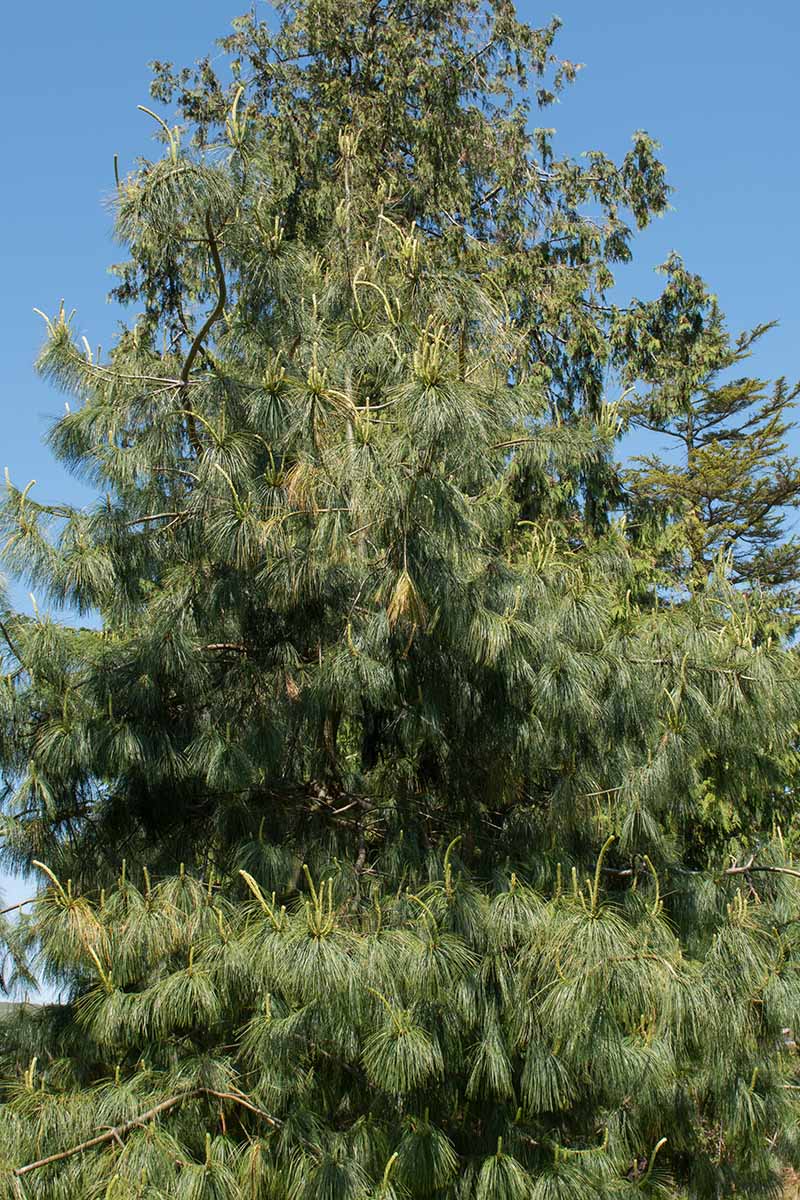
Hailing from China, Tibet, Taiwan, and the Korean Peninsula, P. armandii is suited to USDA Zones 5 to 7.
Reaching 30 to 50 feet tall and 20 to 30 feet wide, it has a rounded, pyramidal habit.
The form and foliage of this tree combine to create a pleasing, graceful softness.
I normally wouldn’t consider a bunch of needles to be cozy-looking, but the Chinese white pine is a delightful exception.
7. Chir
Native to the Himalayas, P. roxburghii owes its species epithet to William Roxburgh, a Scottish botanist who discovered the tree in India.
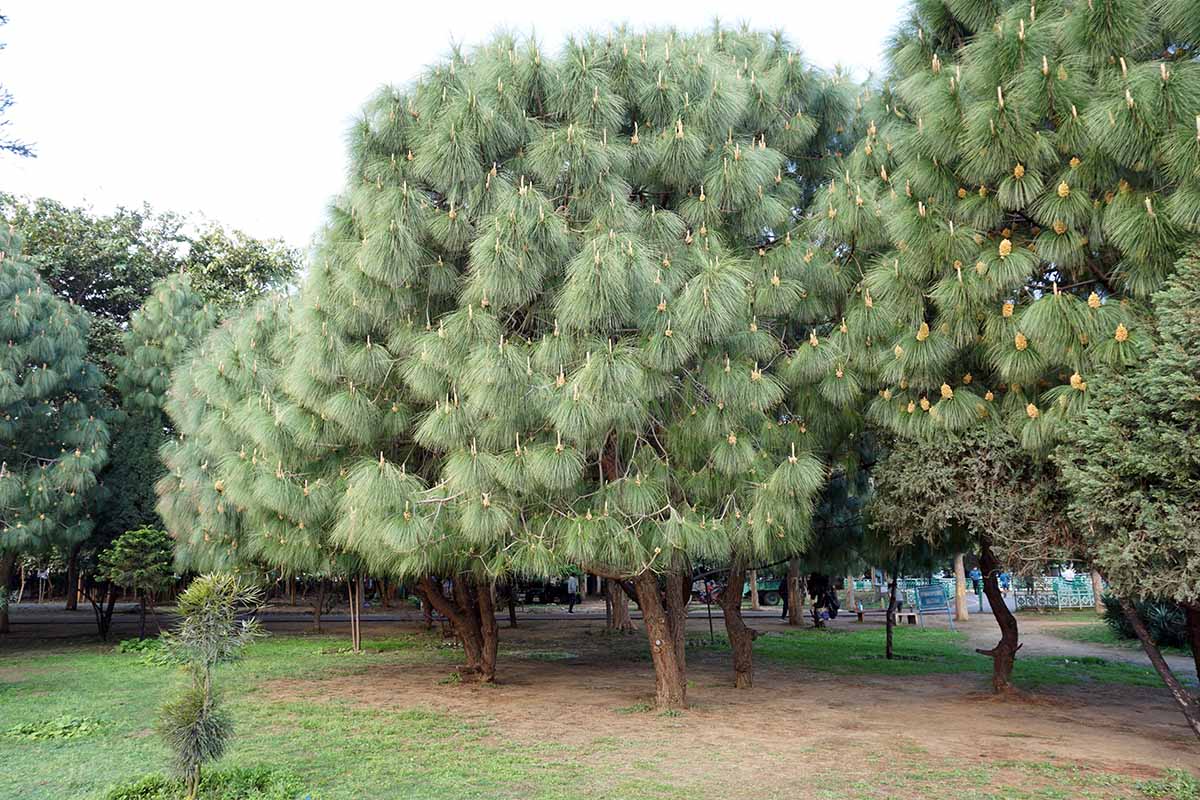
Hardy in USDA Zones 8 to 11, the chir pine reaches heights of 50 to 100 feet, or sometimes taller, with a spread that’s significantly narrower.
As a result, the tree rocks a very upright and moderately slender form.
The shiny, brown, egg-shaped cones of this species can reach lengths of eight inches, while the light green, finely-textured needles grow in bundles of three and can reach a foot in length.
A fine species with big ol’ cones and needles, this tree is a beautiful fit for high elevations, green spaces, or anywhere else you want a tall pine to make a big statement.
8. Eastern White
Hailing from southeastern Canada and the eastern United States, P. strobus is a very picturesque pine, with typical heights of 50 to 80 feet, a spread of 20 to 40 feet, and a plume-like form with gracefully horizontal to ascending branches.

Hardy across USDA Zones 3 to 8, P. strobus bristles with soft, bluish-green needles in bundles of five. It also produces light brown, cylindrical cones four to eight inches in length.
Whether grown as a large specimen in the lawn or regularly sheared as a controlled hedge, you’re sure to find a suitable spot in your landscape for this stunning conifer.
Snag a one-gallon P. strobus for yourself from PlantingTree.com.
9. Eldarica
Originating in Afghanistan and central Asia, P. eldarica will grow best in USDA Zones 6 to 10. My first thought upon seeing this tree? “Wow, what a pleasant shape!”
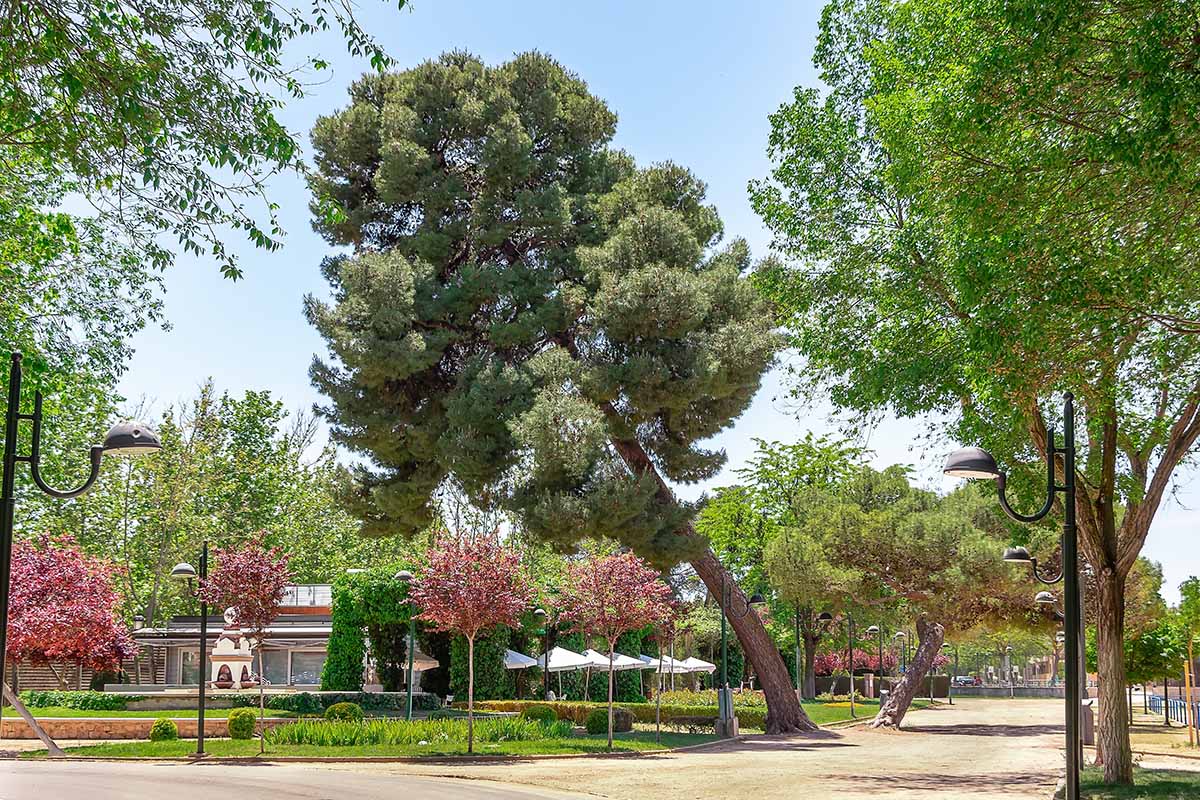
Typically reaching heights of 30 to 60 feet and spreads of 25 to 40 feet at maturity, this pyramidal pine has upward-ascending branches that grow with a moderate density, resulting in a full crown that never ceases to impress.
The oval-shaped, reddish-brown cones of P. eldarica reach one to three inches in length, while the twin-bundled, medium green, three- to five-inch needles are slightly wavy rather than purely straight, which creates the “soft and pleasant” look that stiffer-needled pines lack.
P. eldarica is a fantastic specimen for many parts of the landscape. It works wonderfully as a windbreak, and can even be brought indoors for the holidays as a Christmas tree!
If you’re interested, feel free to pick up a four- to five-foot P. eldarica from FastGrowingTrees.com.
10. Foxtail
Sharing a common ancestor with bristlecone pines, P. balfouriana is endemic to California, and hardy in Zones 4 to 7.
An upright, slender tree with thick and gnarly wood, this species typically reaches 20 to 50 feet tall, with a spread that’s about half that due to short and stout branching.
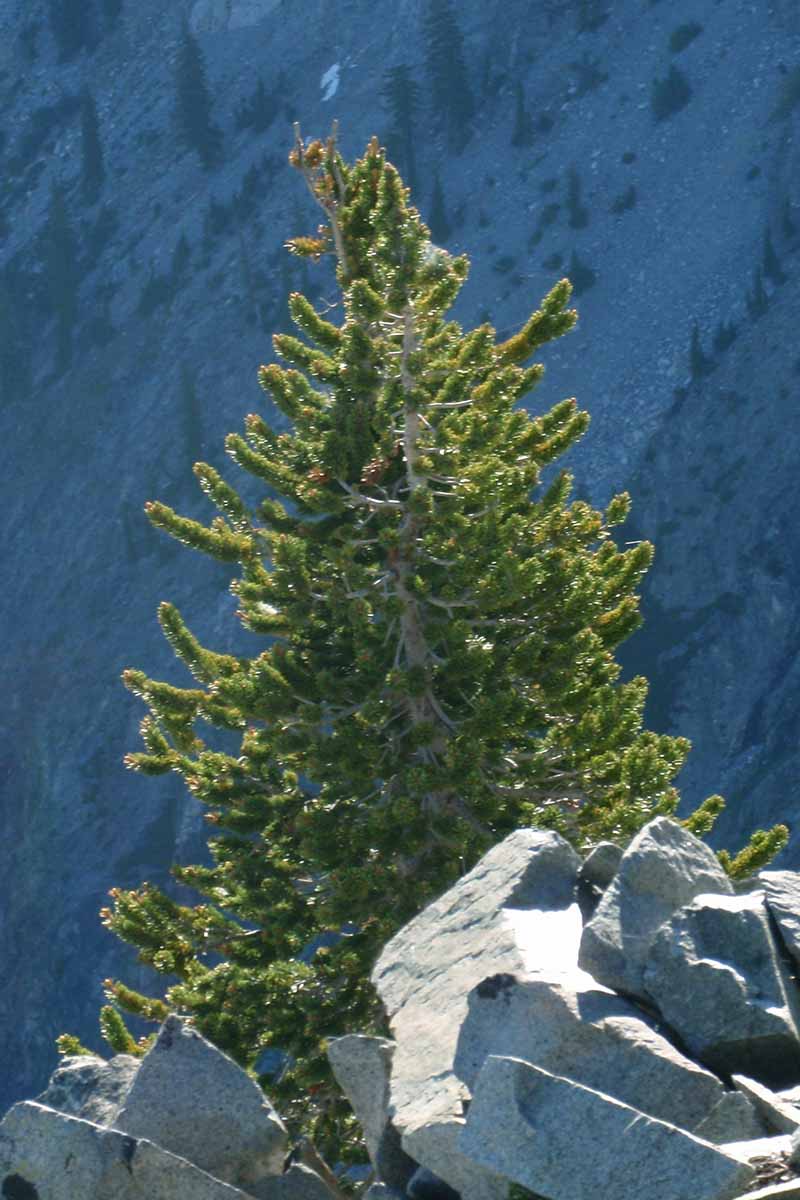
From these branches grow bundles of five one- to two-inch needles with glossy green exteriors and white inner faces, along with reddish-brown and oval-shaped cones that reach two to seven inches in length.
This species is difficult to cultivate due to a slow growth rate and location constraints… but it’s definitely a looker, should you happen to stumble across one in the western United States.
11. Himalayan
Also known as the Bhutan pine, P. wallichiana is another species from the Himalayas, typically reaching heights of 30 to 50 feet and spreads of 20 to 35 feet.
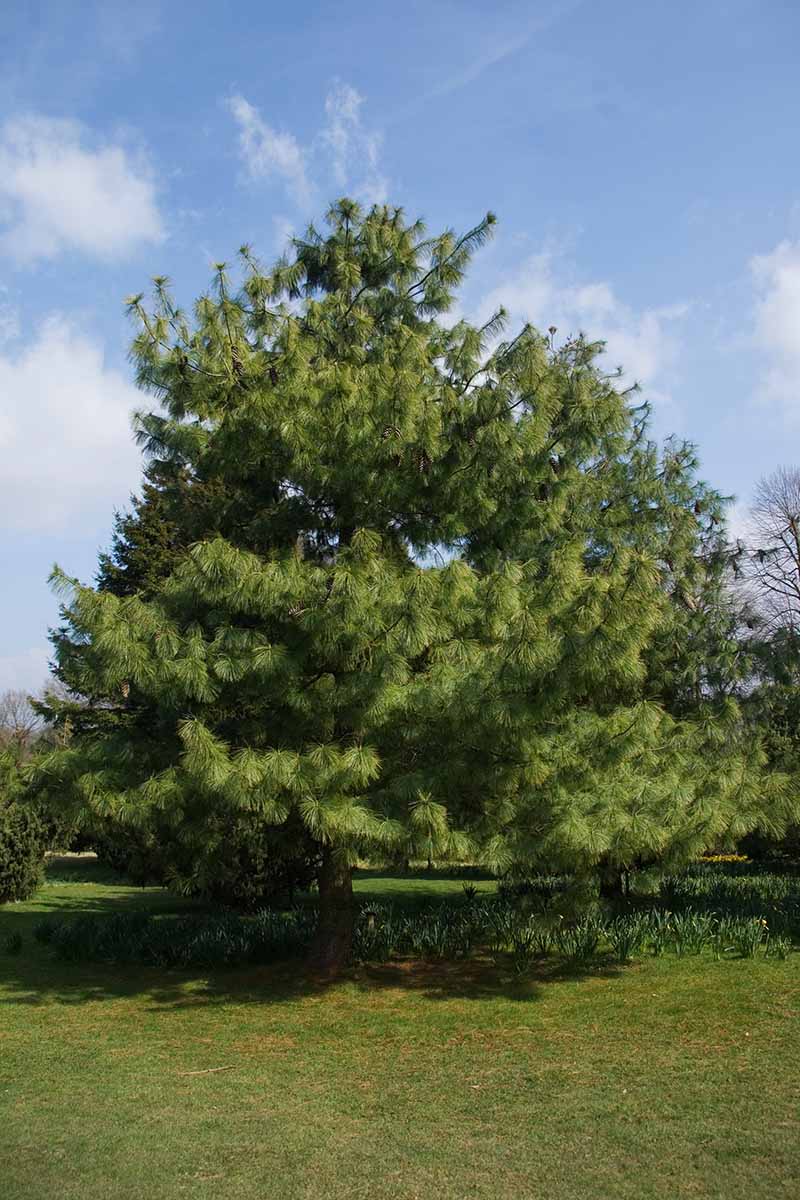
Hardy in USDA Zones 5 to 7, this tree has an elegant form, with a loose and broadly pyramidal habit that looks neither contained nor unruly.
With five- to eight-inch, grayish-green, flaccid needles in bundles of five alongside slightly curved, cylindrical brown cones that are six to 10 inches in length, P. wallichiana has a soft and inviting appearance, whether seen up close or viewed from afar.
12. Italian Stone
Native to the Mediterranean region, P. pinea is also known as the umbrella pine, and for good reason: its mature crown looks like it could shield you from the rain pretty well.
A lot of rain, might I add – this tree typically reaches heights of 40 to 60 feet and spreads of 20 to 40 feet.
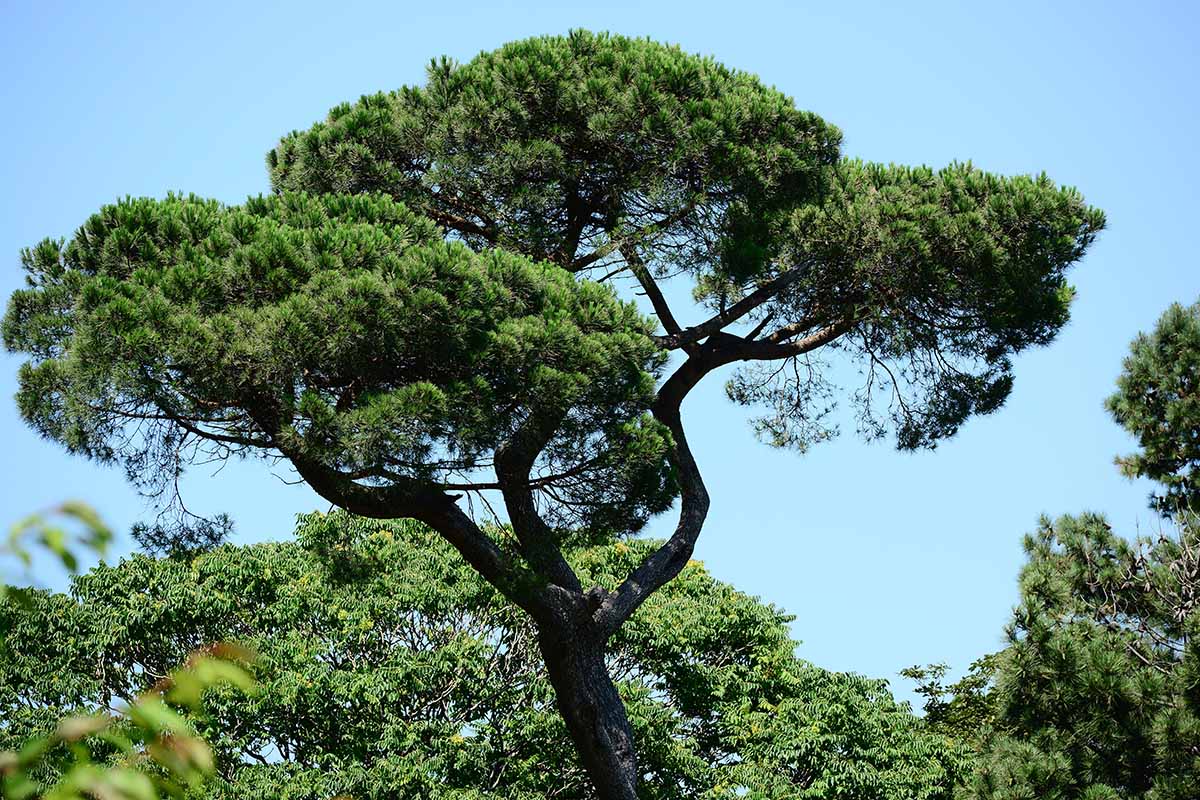
Hardy in USDA Zones 8 to 10, this pine bristles with bundles of two bright green to grayish-green needles, each five to eight inches long.
Alongside the foliage grow reddish-brown, nearly spherical cones that can reach six inches long.
With a multi-trunked habit, the Italian stone pine looks much different from your typical pines, earning it props for uniqueness.
Whether grown solo, in groups, or as a screen, P. pinea is well worth the effort required to cultivate it.
13. Jack
Named after esteemed plantsman Joseph Banks, P. banksiana reaches heights of 35 to 50 feet and spreads 20 to 30 feet while possessing an open, spreading, and irregularly-shaped crown that one could refer to as “scraggly.”
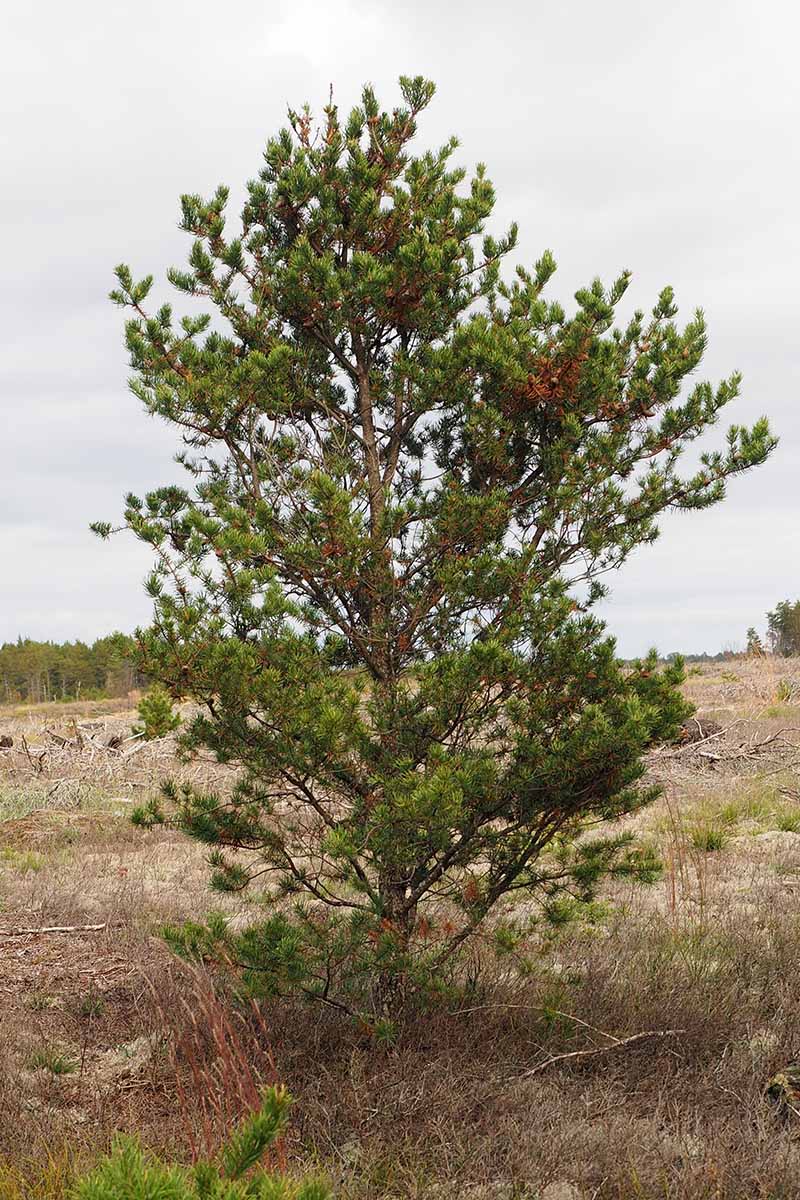
Native to the northernmost United States and throughout Canada, it actually grows as far north as the Arctic Circle, earning it the title of “Northernmost Pinus.”
The stiff, olive green needles are a short one and a half inches and borne in bundles of two, while the brown, resin-coated cones are curved and fat, growing up to two and a half inches long.
Hardy in USDA Zones 2 to 6 with a tolerance for poor soils, P. banksiana is proof that toughness is a worthy landscaping trait all on its own.
14. Japanese Black
Hardy in USDA Zones 5 to 8, P. thunbergii hails from coastal Japan and the Korean Peninsula, packing a tolerance for sandy soils and salty sea sprays.
Usually reaching heights of 20 to 60 feet and spreads of 12 to 20 feet, the Japanese black pine has a generally conical yet uneven habit, typically with distinctly tiered branching.

Said branching is bristling with two-bundled, glossy green, twisted needles, each with a length of two and a half to four and a half inches.
The canopy is also abundant with brown-gray ovoid cones, each one and a half to three inches long. Whether cultivated as a full-size specimen or trained as bonsai, P. thunbergii is well worth your gardening efforts.
15. Japanese Red
A native of temperate East Asia, P. densiflora typically reaches heights of 40 to 60 feet and widths of 15 to 25 feet, often with a broad, irregular, open, floppy, and usually multi-trunked crown.
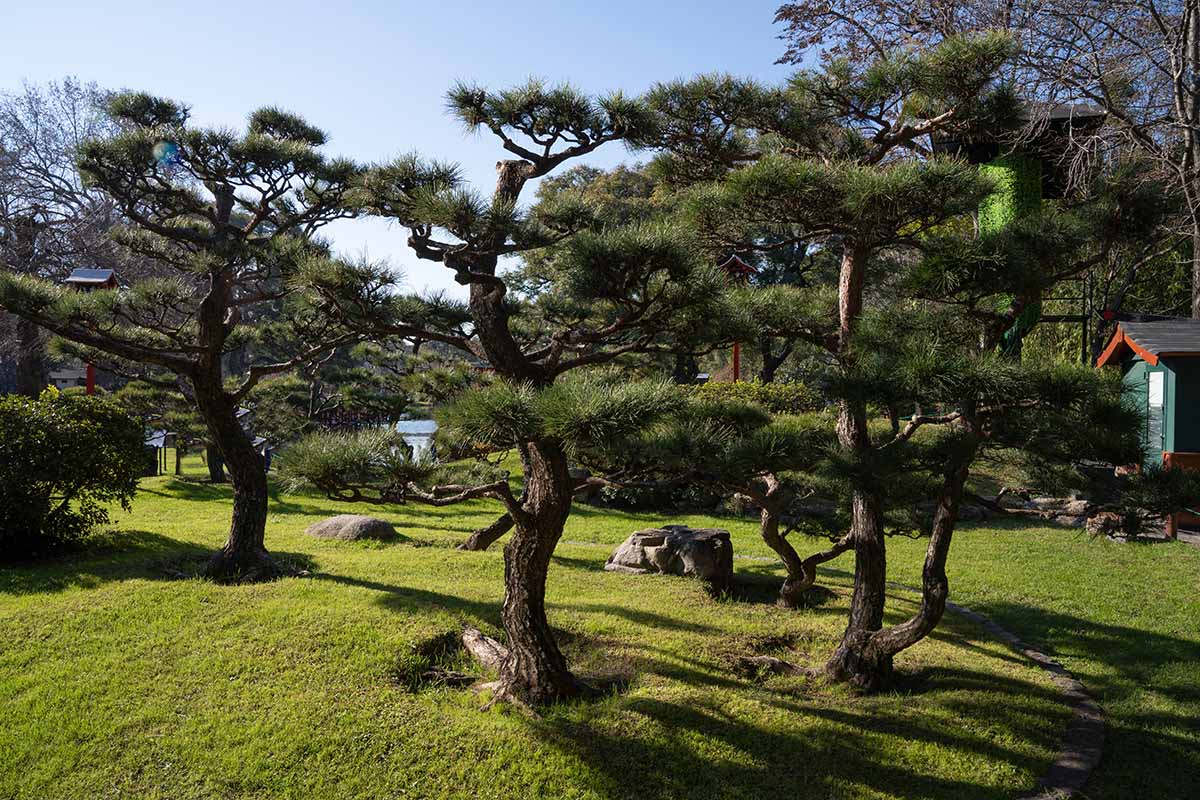
Hardy in USDA Zones 5 to 7, this tree grows three- to five-inch, bright green, twisted needles in bundles of two alongside brown, oblong cones that reach a length of two inches.
Another species that’s equally aesthetic as a full-size specimen or bonsai, P. densiflora will make you do a double-take, especially if you’re used to getting your aesthetic fix of Pinus from North American natives.
16. Japanese White
Starting its life with a dense, conical to pyramidal shape, P. parviflora eventually develops more of a wide-spreading and flat-topped habit, along with a mature height and spread of 30 to 50 feet.
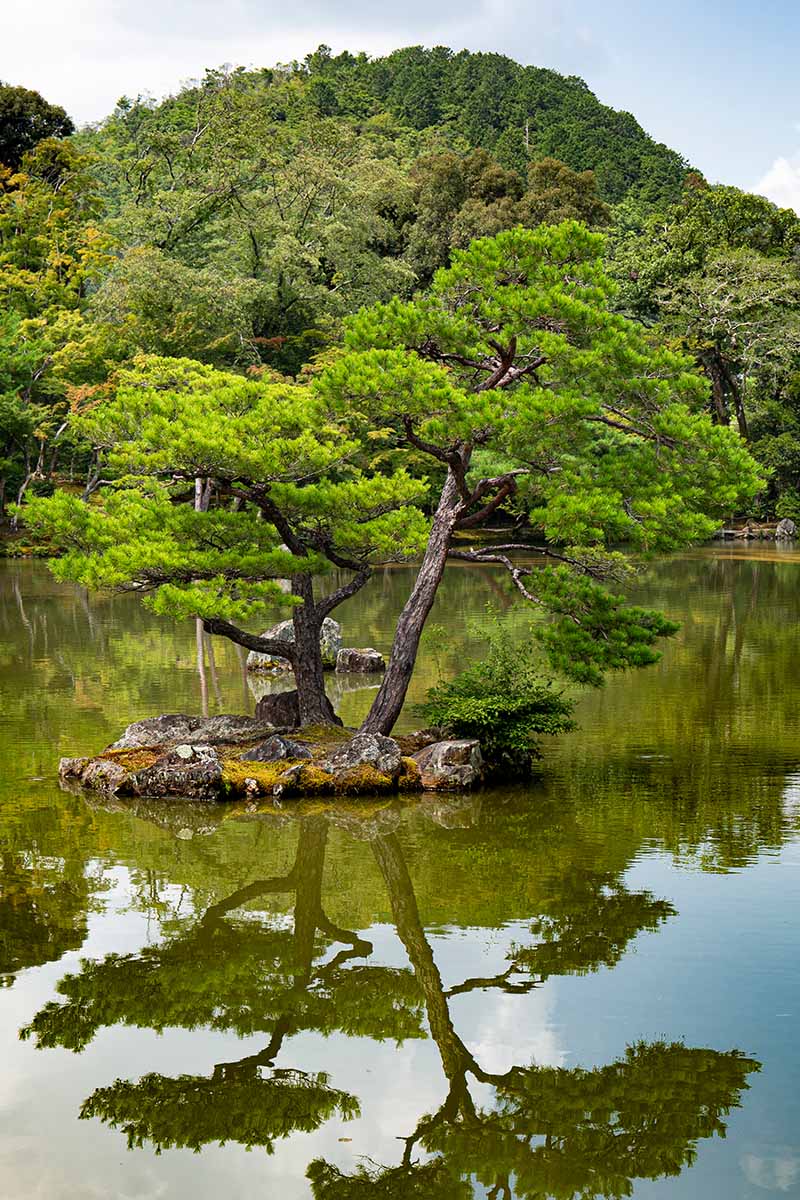
Naive to Japan and China, this pine is hardy in USDA Zones 4 to 7, and is a perfect choice for smaller planting spaces.
Besides its smaller stature, P. parviflora rocks five-bundled, twisted, blue-green needles alongside two- to four-inch brownish-red cones.
17. Jeffery
Wielding an easy-to-remember Latin name, P. jeffreyi is hardy in USDA Zones 5 to 7 and hails from a region spanning southern Oregon to the northern part of Baja California in Mexico.
The tree bristles with bundles of three blue-green, seven- to nine-inch needles alongside reddish-brown, cylindrical cones up to a foot in length.
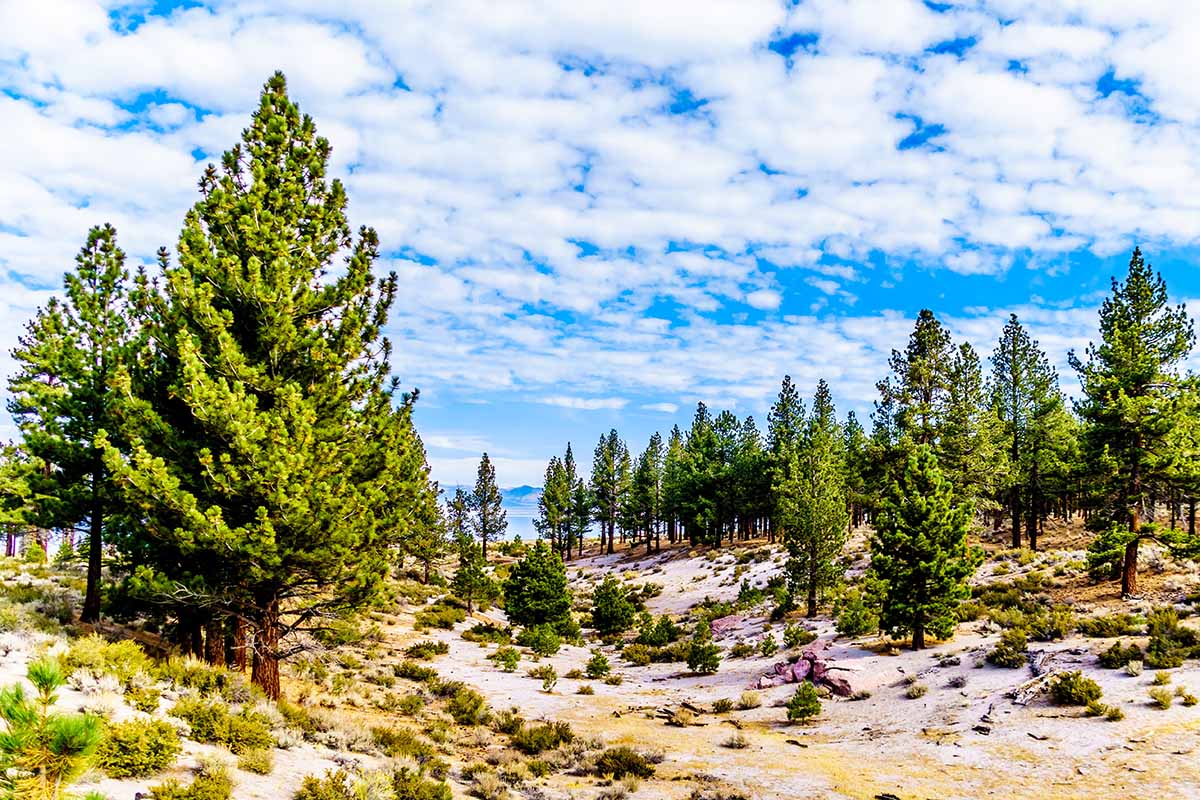
Named for the US-based Scottish botanist John Jeffery – the man who discovered this tree – P. jeffreyi reaches heights of 80 to 140 feet, with spreads of 25 to 35 feet.
The top half of the trunk flaunts a conical to rounded crown, while the lower half bears no branches.
As a Missourian, growing this tree will always remain a pipe dream for me. But for those on the West Coast with ample room in their landscape, P. jeffreyi just might be the pine for you.
18. Korean
An East Asian native, P. koraiensis typically reaches mature heights of 30 to 50 feet and mature spreads of 25 to 35 feet, rocking a loose, pyramidal form.
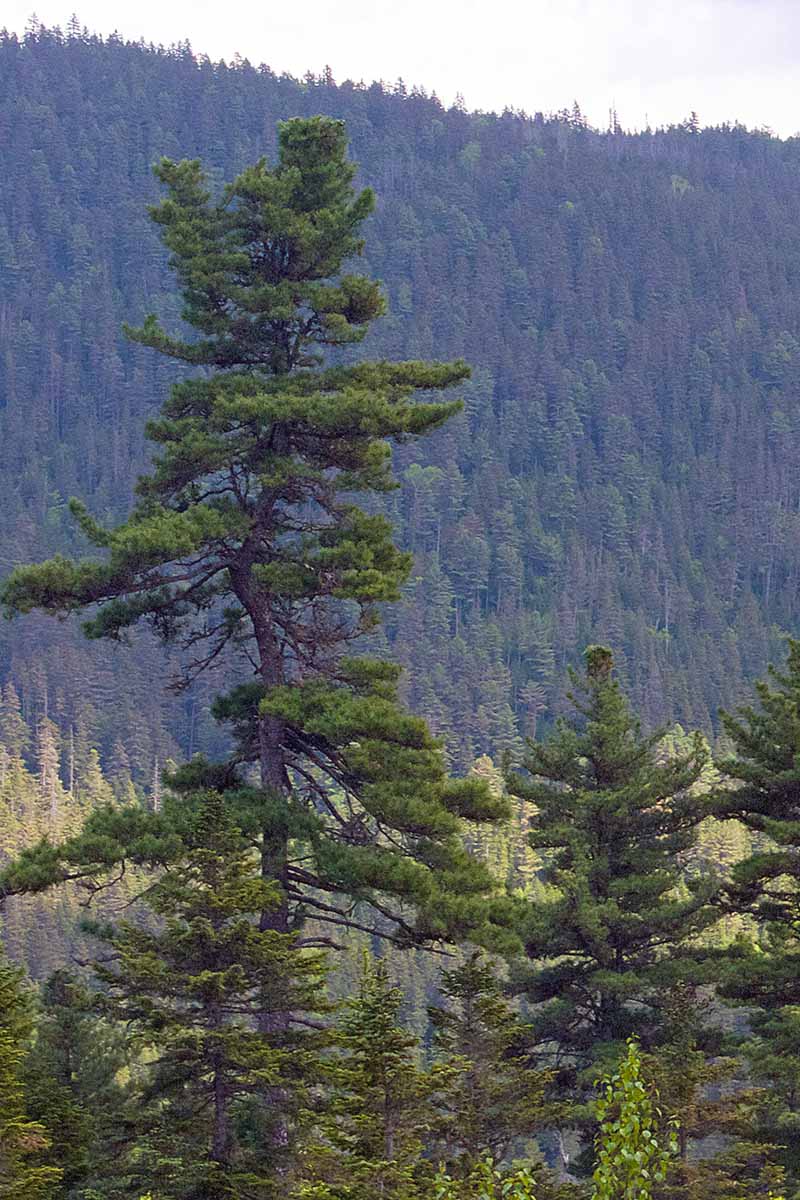
The tree grows two-and-a-half- to four-and-a-half-inch needles in groups of five, each with glossy green outsides and white stomatal lines on the inside, which combine to give the foliage a blue-green appearance.
Bearing edible pine nuts, the ovoid cones are three and a half to six inches long and mature to a dark brown.
Yet another epic pine from the Far East, P. koraiensis is a particularly fine choice for screening your landscape whilst adding to its beauty, whether planted solo or in a group.
19. Knobcone
Native to a region spanning northwestern Mexico through southern Oregon and hardy in USDA Zones 6 to 10, P. attenuata thrives in the dry, rocky soils of its native sites.
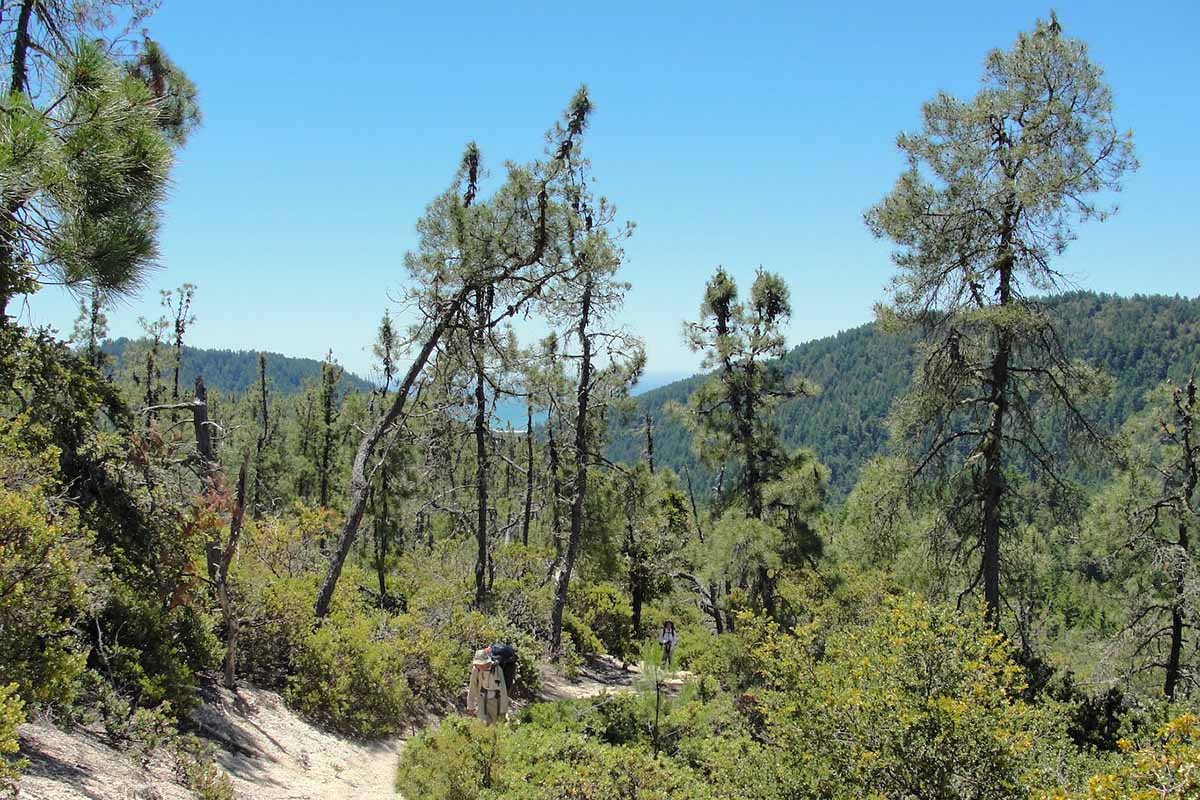
With a skinny, conical form, mature height of 30 to 70 feet, and spread of 10 to 20 feet, this tree produces light green, three- to seven-inch needles in groups of three, along with thick, three- to six-inch cones of a yellowish-brown hue.
It’s not the best selection for formal landscapes, but it’s definitely a worthy contender in more naturalized settings.
20. Lacebark
Slow-growing yet worthy of showing, P. bungeana is referred to in common parlance and notable for its exfoliating bark.
Upon peeling away, the dark gray bark reveals a patchwork of olive, light purple, silver, and milky white underbark.
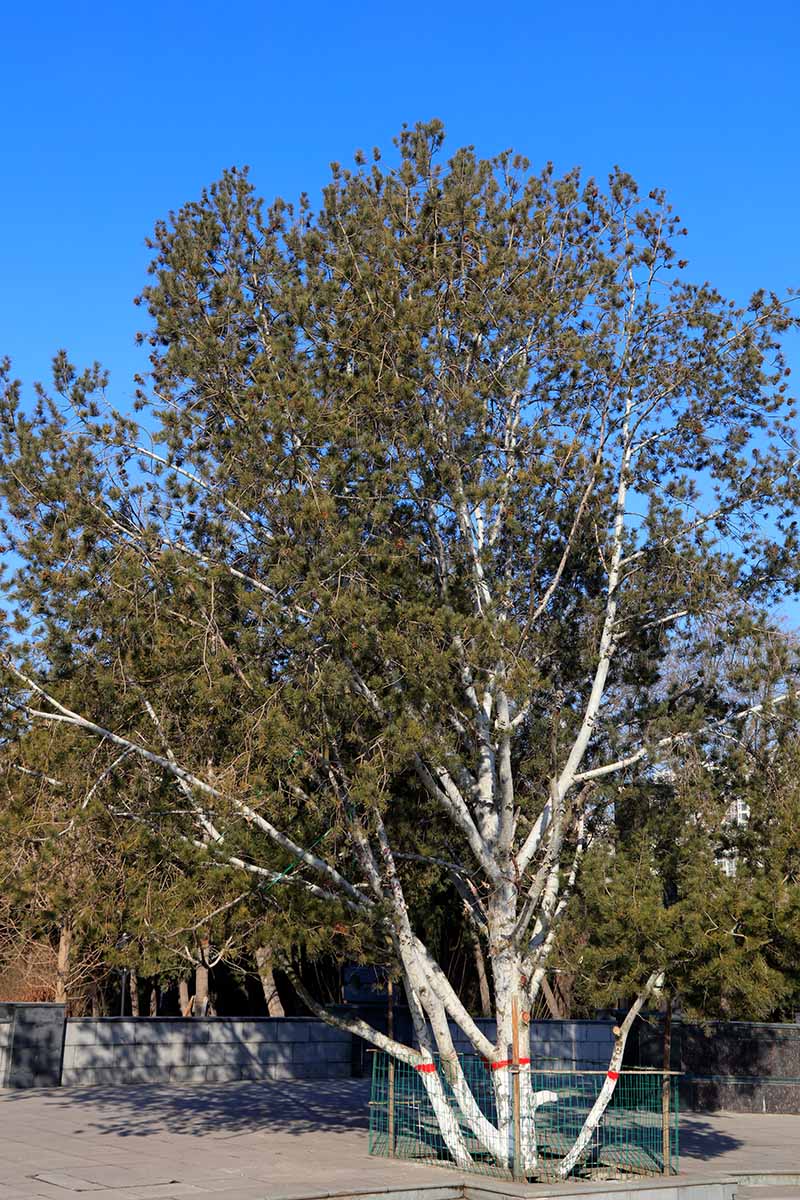
Not to say that the needles and cones aren’t appealing – the former feature medium to dark green hues and two- to four-inch lengths in bundles of three, while the latter are egg-shaped, yellow-brown, and up to two inches long.
This species grows 30 to 50 feet tall and 20 to 35 feet wide, with a pyramidal, rounded habit that becomes more open, flat-topped, and broadly-spreading with age.
Most pine bark is ridged and colored with a gray hue of some sort – not that it’s a bad thing, but the delightful lacebark will provide a welcome break for anyone who’s sick of more typical Pinus bark.
21. Limber
Native to western North America and hardy in USDA Zones 4 to 7, P. flexilis earns its common name and species epithet from the flexible nature of its branchlets.
They’re so flexible, in fact, that you can actually tie them in knots!

This bendy plant starts off with a pyramidal habit before maturing to a more rounded and flat-topped form.
Reaching heights of 30 to 50 feet and widths of 15 to 35 feet, this tree is packed with five-bundled needles, each two and a half to three and a half inches long with a dark green and slightly glossy hue.
The light brown, egg-shaped cones are three to six inches long and typically quite resinous.
A medium-sized pine that’s fit for flaunting, P. flexilis is also a popular selection for Christmas trees. After all, reaching for presents is a lot easier when those branches are bendy!
22. Loblolly
Reaching typical heights of 40 to 90 feet and spreads of 20 to 40 feet, P. taeda trees have a rather straight trunk, an oval to rounded crown, and a conspicuous lack of lower branches.
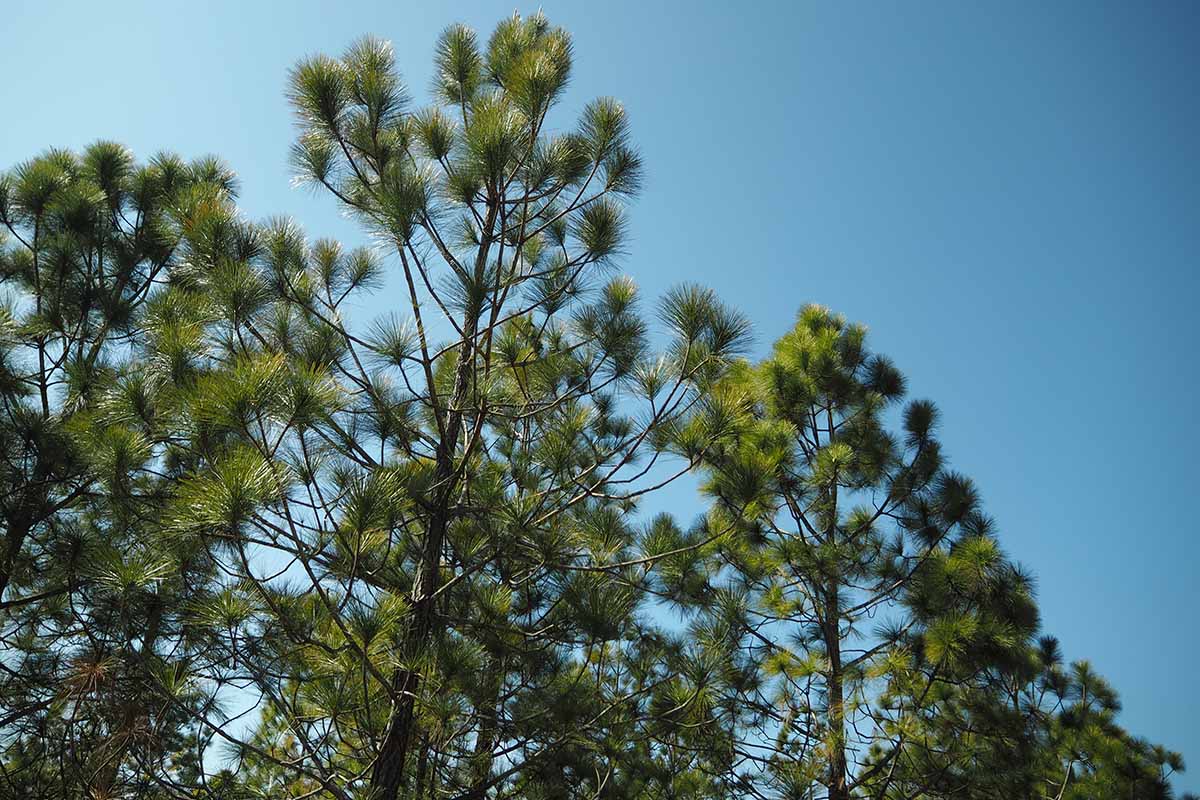
The location of the lower branches varies between individual specimens, but I’ve seen some trees that resemble Q-tips or toilet brushes, if the cleaning bits are considered the foliage in this analogy.
Speaking of foliage, these pines put out six- to 10-inch, dark yellow-green needles in groups of three, and oval-shaped, three- to six-inch, rust-brown cones.
Native to the southeastern United States and hardy in USDA Zones 6 to 9, this is an important timber tree, and it’s quite useful as a juvenile for when you need a fast screen in the landscape.
You can find five- to six- and six- to seven-feet-tall plants in #3 containers at Nature Hills Nursery.
23. Lodgepole
Another one of those “prettier in nature than in the landscape” pines, P. contorta is rather striking nonetheless.
With a narrow and open canopy, it reaches skinny heights of 25 to 80 feet, depending on the subspecies.

The two-bundled, yellow-green needles are one and a half to three inches long, while the brown, stout cones are about one to two inches long.
The “lodgepole” moniker comes from the Native American practice of using the lumber for constructing dwellings, while the contorta epithet refers to the twisting of the needles and overall contortion of coastal lodgepole pine specimens.
24. Longleaf
You gotta love it when the common name of a plant tells you how to identify it. As advertised, P. palustris has quite lengthy dark green needles in clumps of three, with each measuring up to 18 inches long!
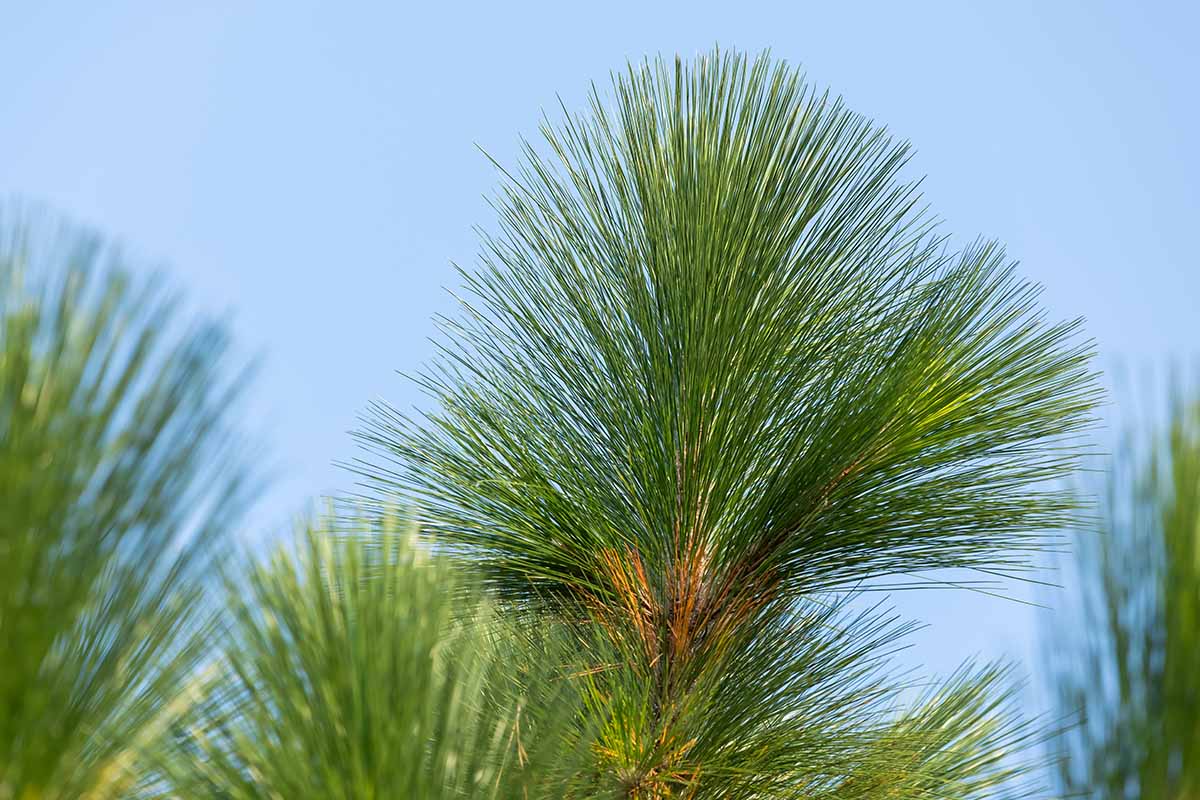
The oval-shaped, reddish-brown cones are also pretty big, with each measuring six to 10 inches in length.
This tree typically reaches heights of 60 to 80 feet and widths of 30 to 40 feet, with a straight trunk and open, rounded crown.
Hailing from the southeastern United States and hardy in USDA Zones 7 to 10, the longleaf pine is an intriguing plant that’s fit for large, rural properties.
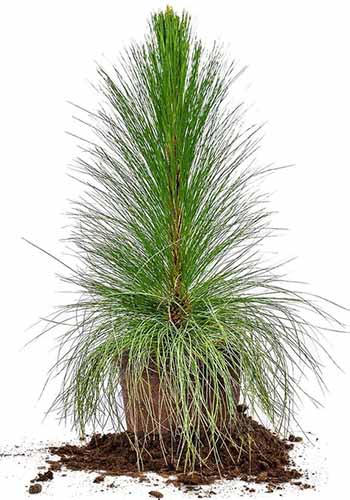
It’s available in three-gallon pots from Perfect Plants Nursery.
25. Monterey
Typically reaching heights of 50 to 100 feet with a broadly conical and rounded crown, P. radiata is endemic to select parts of California, with a hardiness range of USDA Zones 7 to 10.
Cultivated worldwide for its lumber, the tree is actually a relative rarity within its native sites.
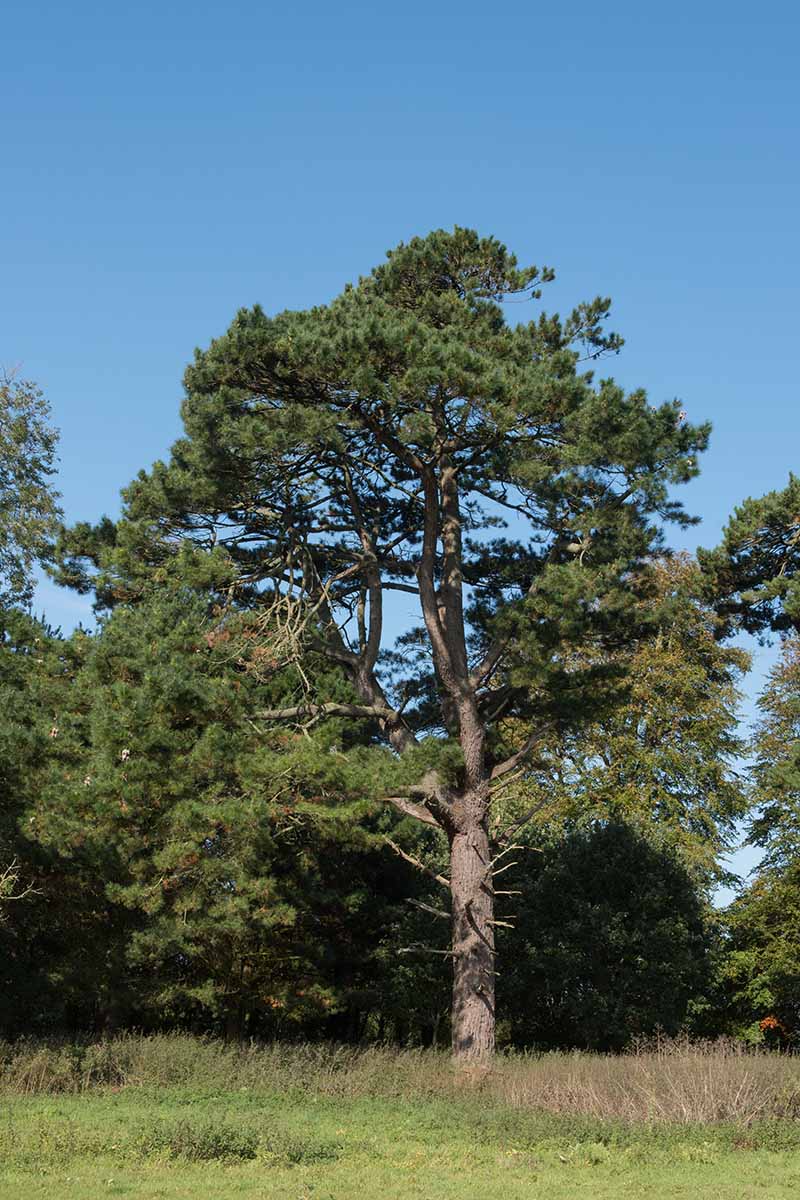
You can identify these trees by their two- to three-clustered, bright green needles, each measuring three to six inches long. The brown egg-shaped cones are a similar length, as well.
With a fast growth rate and a long taproot that’s adept at drawing up moisture in dry sites, this pine tree is quite the worthy selection for landscaping.
26. Mugo
Also known as the Swiss mountain pine, P. mugo hails from mountainous regions of south and central Europe, and is hardy in USDA Zones 2 to 7.

In landscape settings, this bushy, rounded, multi-stemmed pine typically reaches 15 to 20 feet in height with a spread of 25 to 30 feet – a nice change of pace from the often tall and skinny dimensions of other Pinus species, wouldn’t you say?
Flaunting bundles of two bright green needles an inch to three in length alongside two-and-a-half-inch, dull brown cones, the mugo pine is primarily valued for the many dwarf cultivars that it offers, which are often planted en masse or placed in tight spaces where larger pines would be too cumbersome.
‘Mughus’ is one such dwarf, growing six to 10 feet tall by 10 to 15 feet wide. Three-gallon specimens await you at PlantingTree.com.
Learn more about mugo pine care here.
27. Pinyon
Native to the southwestern United States and northwestern Mexico, P. cembroides is one of eight or so species belonging to the Pinus subsection Cembroides.
This species is hardy in USDA Zones 5 through 8, reaches heights of 20 to 30 feet and spreads of 15 to 20 feet, and attains a rounded, conical canopy with age.
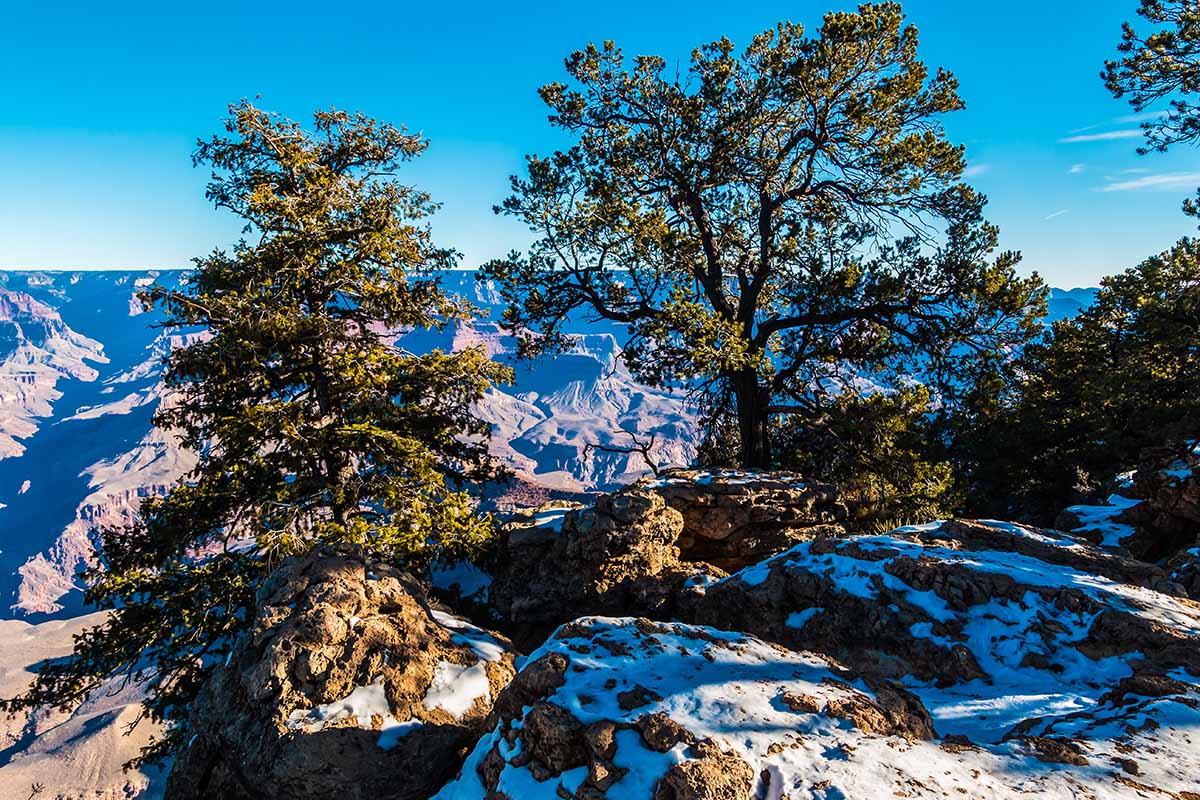
It produces one- to two-inch, stiff, blue-green needles in groups of two or three alongside brown, egg-shaped cones one to three inches in length.
Said cones yield deliciously edible pine nuts, which are quite attractive to both man and beast. But the plant’s overall appearance is also very pleasing, as is its tolerance for dry soils!
28. Pitch
Naturally found growing in the acidic, barren, and sandy soils of the eastern United States, P. rigida is hardy in USDA Zones 4 to 7.
Reaching mature heights of 40 to 60 feet, with mature spreads of 30 to 50 feet, it typically has an open, gnarled, and irregular habit, which is further amplified in harsh, exposed sites.
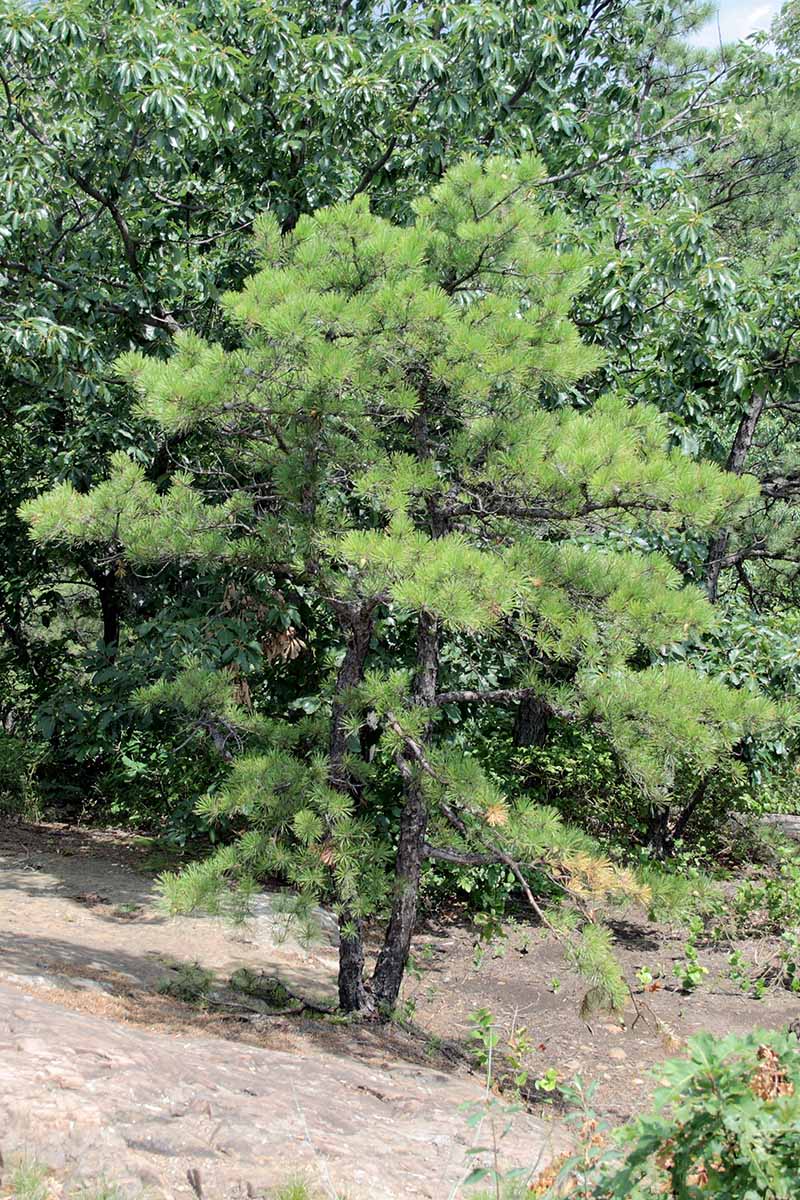
The green needles of this pine have a slight twist to them, and are borne in threes in lengths of three to five inches.
Also present are two- to three-inch, light brown cones with rather striking symmetry.
Used in days past for pitch and days present for lumber, pitch pines aren’t the prettiest of plantings, but they work well in wild or otherwise solitary sites with poor soils.
29. Ponderosa
The most prevalent pine tree in western North America, P. ponderosa typically reaches heights of 60 to 100 feet and spreads of 25 to 40 feet in cultivation, although wild specimens can grow much larger.
At maturity, the tree has a narrow and irregularly cylindrical crown, usually with short, stout lateral branching.
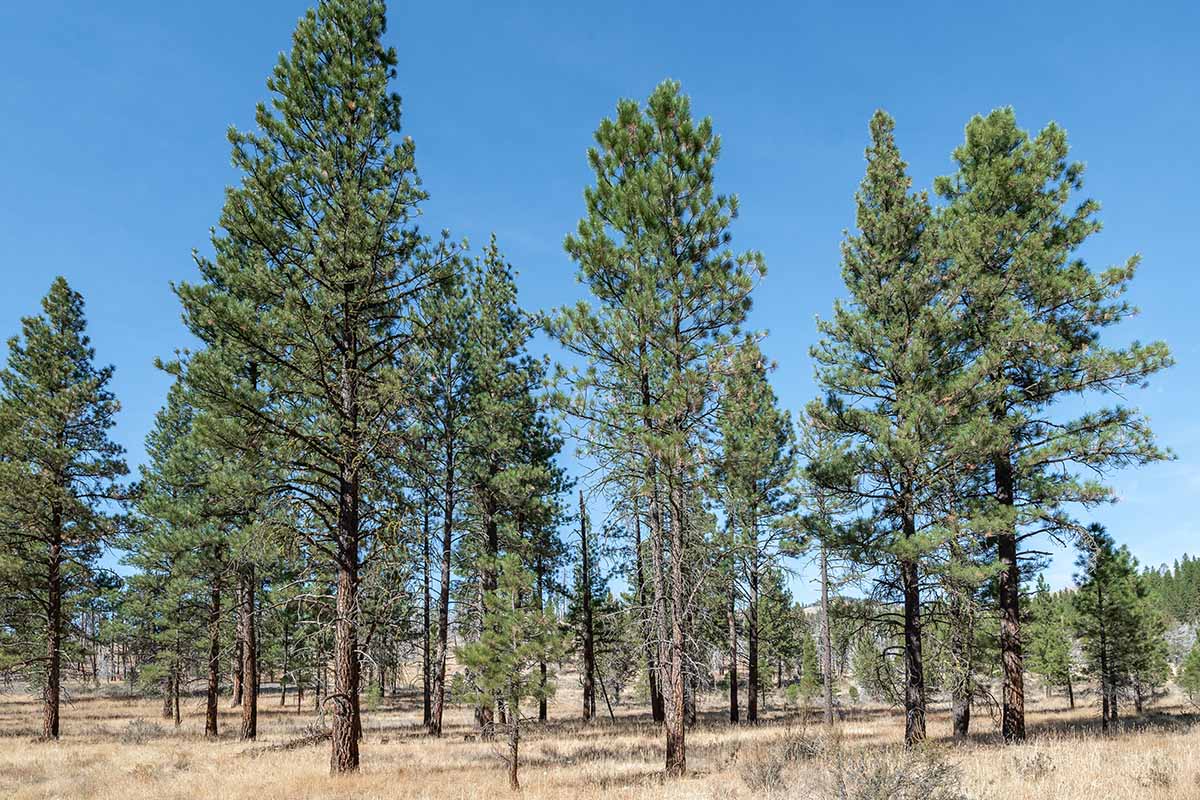
Dark to yellowish-green, five- to 10 inch-long needles grow in bundles of two or three alongside reddish-brown, oval-shaped cones three to six inches in length.
A fantastic forest or mass planting within its native range, this tree is a solid choice for a “shelter belt,” or a long line of tall plants that halt winds from severely buffeting large areas such as croplands.
30. Red
Hailing from eastern North America and hardy in USDA Zones 2 to 5, P. resinosa attains mature heights of 50 to 80 feet and mature spreads of 20 to 25 feet, developing a crown with remarkable oval-shaped symmetry.
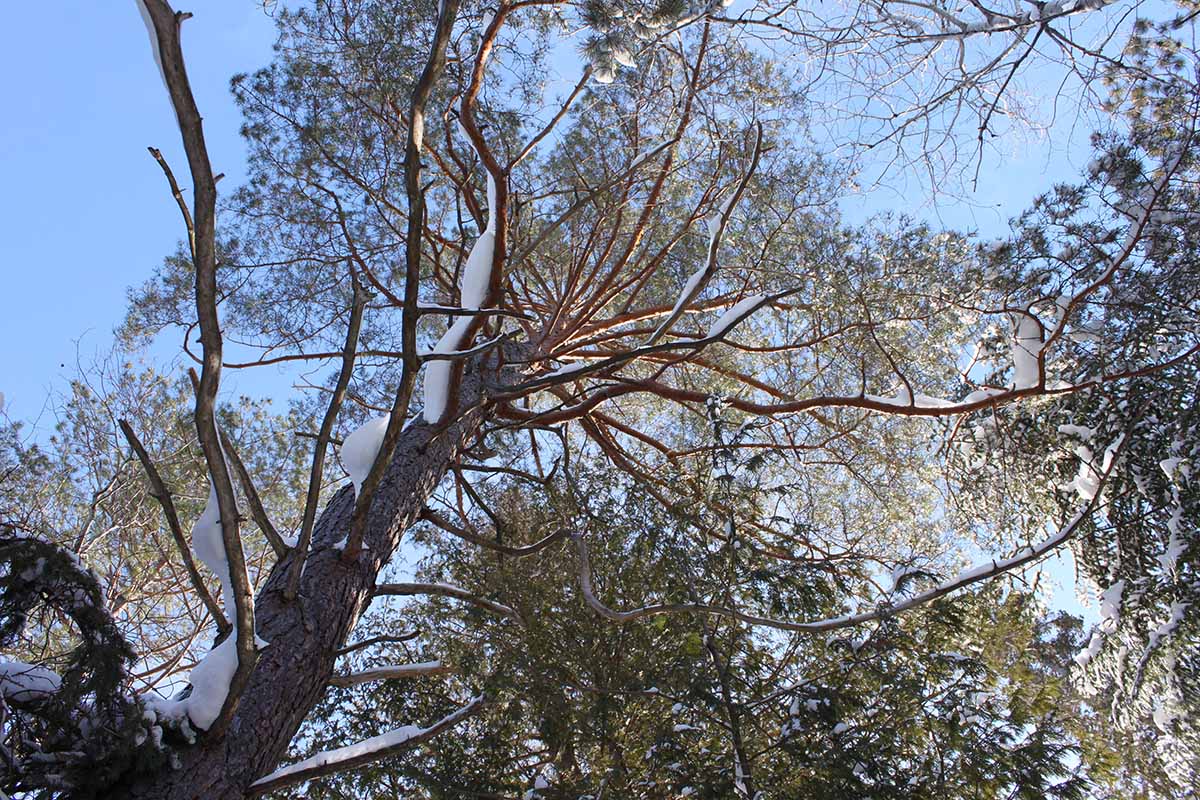
Five- to six-inch, green needles grow in densely-packed bundles of two alongside two-inch brown cones with an egg to conical shape.
Along with the commercial value of its pulpwood and timber, this tree is very handsome, and quite resilient against harsh winds and a variety of different soils.
31. Scotch
Also known as the Scots pine, P. sylvestris has a wide distribution across Europe and Asia, with a similarly large hardiness range of USDA Zones 2 to 7.
This pine develops an open, rounded to flat-topped habit, reaching heights of 30 to 60 feet and widths of 30 to 40 feet.
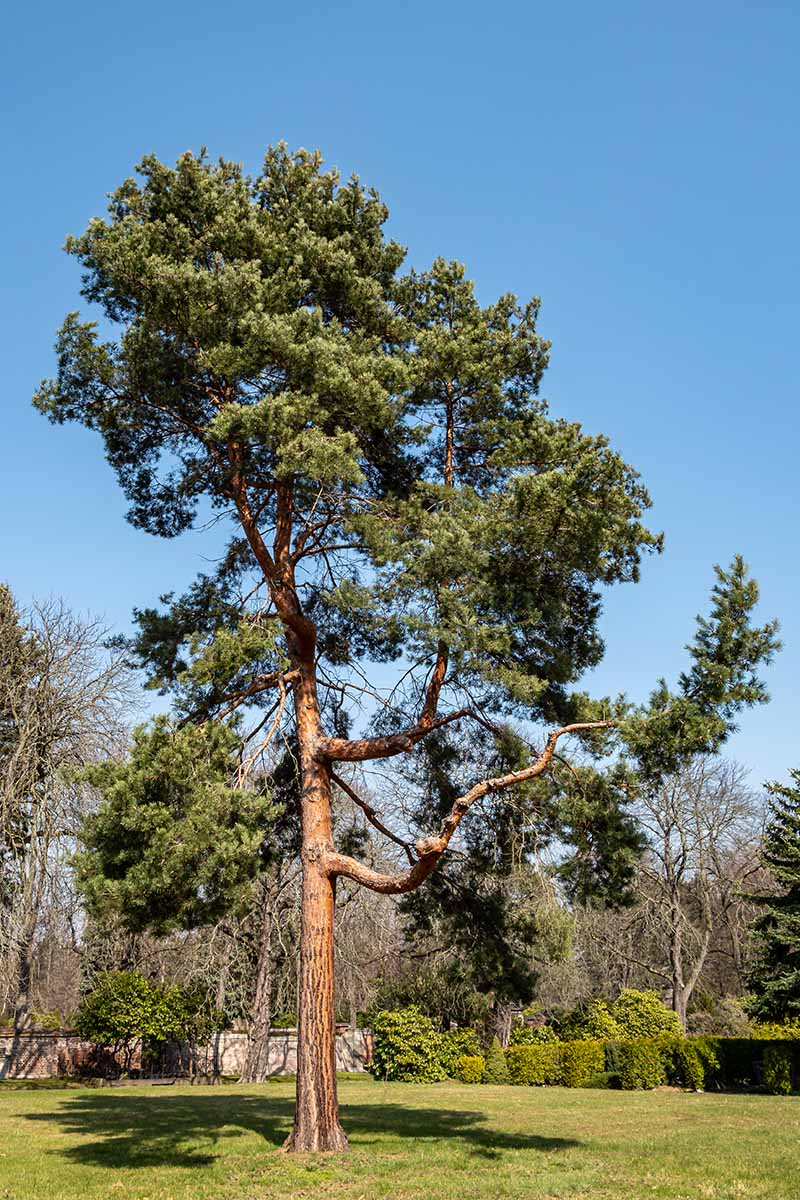
The length of the blue-green, paired, and twisted needles ranges from one to four inches, while the grayish-brown cones are one and a half to three inches long.
Another fantastic selection for yuletide decor, this tree truly stands out in the landscape as a picturesque pine.
32. Shortleaf
Native to the southeastern United States and hardy in USDA Zones 6 to 9, P. echinata produces dark bluish-green, three- to five-inch needles in bundles of two, and brown, one-and-a-half- to two-and-a-half-inch cones.
Also worth noting is this tree’s reddish-brown bark, which certainly adds to the aesthetic.

When cultivated in the landscape, this broad, pyramidal pine typically attains heights of 50 to 60 feet and widths of 20 to 35 feet.
Native gardens, naturalized areas, and campus plantings are just some of its ornamental applications.
33. Slash
Named after the tree- and bush-populated swamplands in which it naturally grows – i.e. “slashes” – P. elliotti hails from the southeastern US and is hardy in USDA Zones 8 to 11.
Developing an open and rounded crown with age, this tree reaches heights of 60 to 100 feet and spreads of 30 to 50 feet.
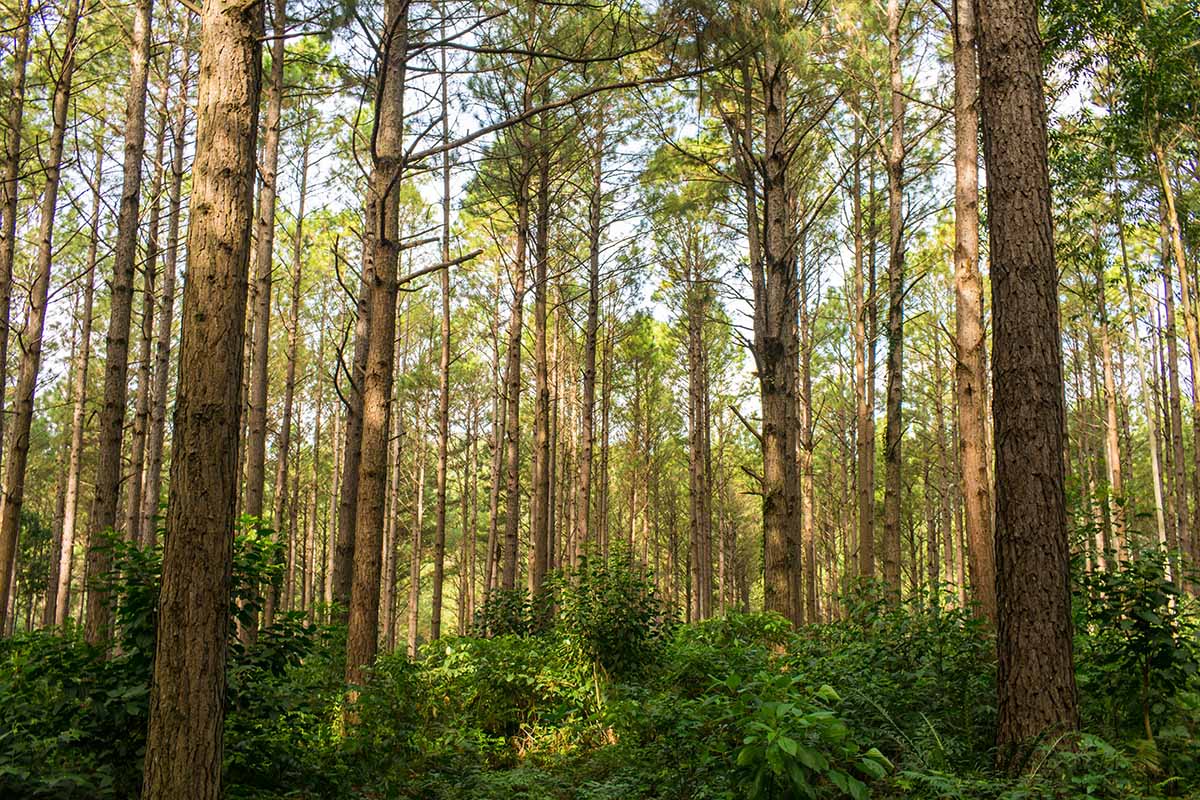
Five- to 10-inch, stiff, glossy green needles are borne in clusters of two to three, and the glossy brown, cylindrical cones are four to six inches long.
A fast growth rate, strong wood, and a tolerance for barren soils make this a great lumber tree.
Aesthetically, these trees look good in groups, but they stand perfectly well on their own (metaphorical) two feet when planted solo.
34. Southwestern White
Native to Arizona, New Mexico, and northern Mexico, P. strobiformis grows 80 to 100 feet tall, 20 to 40 feet wide, and has a pyramidal, open crown that becomes broader with maturity.
Bright blue-green, four-inch needles grow from branches in clumps of five, while the creamy to light brown, egg-shaped cones reach lengths of 10 inches.
P. strobiformis is perfect for when you want the aesthetic of the white or limber pine in a more arid growing environment.
35. Spruce
Native to the southeastern United States and hardy in USDA Zones 8 to 9, P. glabra bears foliage with the dark green, flexible softness of a spruce, hence the moniker.
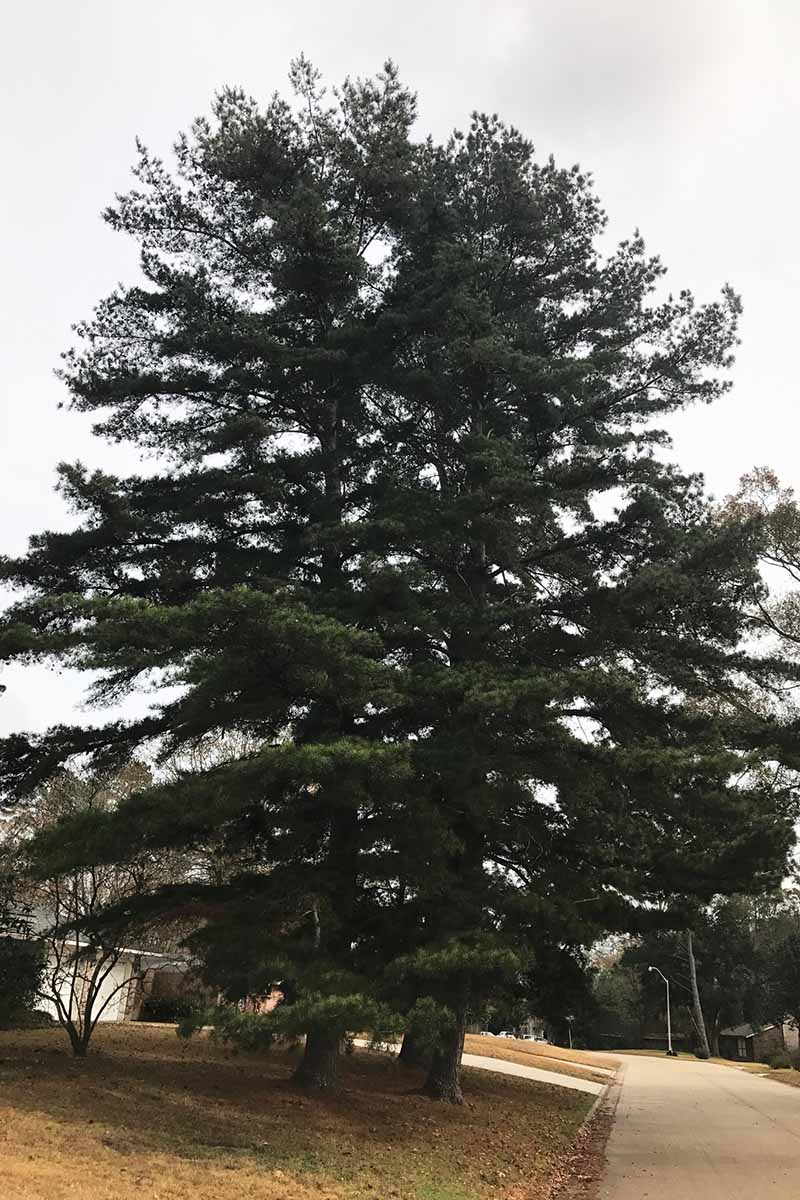
Twisted needles are borne in bundles of two and measure up to four inches long, while the brown, oval cones are one to three inches long.
Possessing a rounded, irregular canopy, this tree reaches 40 to 60 feet in height, with a spread of 25 to 40 feet.
P. glabra tolerates poor, dry, and wet soils, while making for a handsome landscape specimen or Christmas tree.
36. Swiss Stone
Also known as the Arolla pine, P. cembra hails from mountainous regions of Europe and has an open, rounded habit, height of 30 to 40 feet, and spread of 15 to 25 feet at maturity.

Dark green to blue-green needles – each two to five inches long and grouped in bundles of five – grow alongside purplish-brown, egg-shaped cones two to three inches in length.
As with P. pinea, this tree yields delectable pine nuts. Lacking the big ol’ dimensions of its peers, the Swiss stone pine is a gorgeous specimen or mass planting for smaller landscapes.
37. Sugar
The largest species of the Pinus genus with the ability to reach mature heights of 150 to 200 feet, P. lambertiana has another name: “King of Pines.”
As for its sugar moniker, that’s due to the relatively sweet pine nuts and sugary sap that the tree produces.
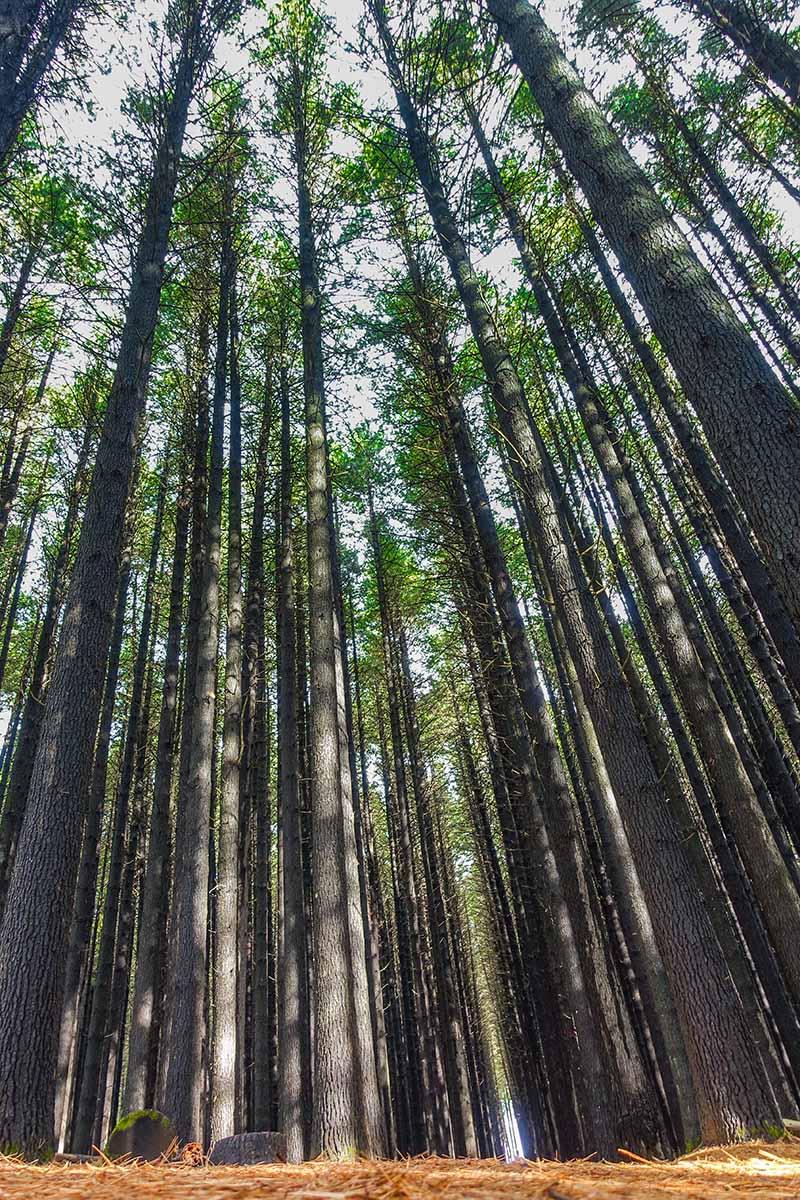
Nearly horizontal branches grow from the tree’s open crown, sprouting two- to four-inch, blue-green needles in bundles of five alongside yellowish-brown cylindrical cones that are 10 to 18 inches long.
Primarily native to California and Oregon, this tree is definitely worth a look-see for any passionate Pinus enthusiast.
38. Turkish
Hailing from the eastern Mediterranean, P. brutia is hardy in USDA Zones 7 to 11, and reaches heights of 65 to 115 feet.
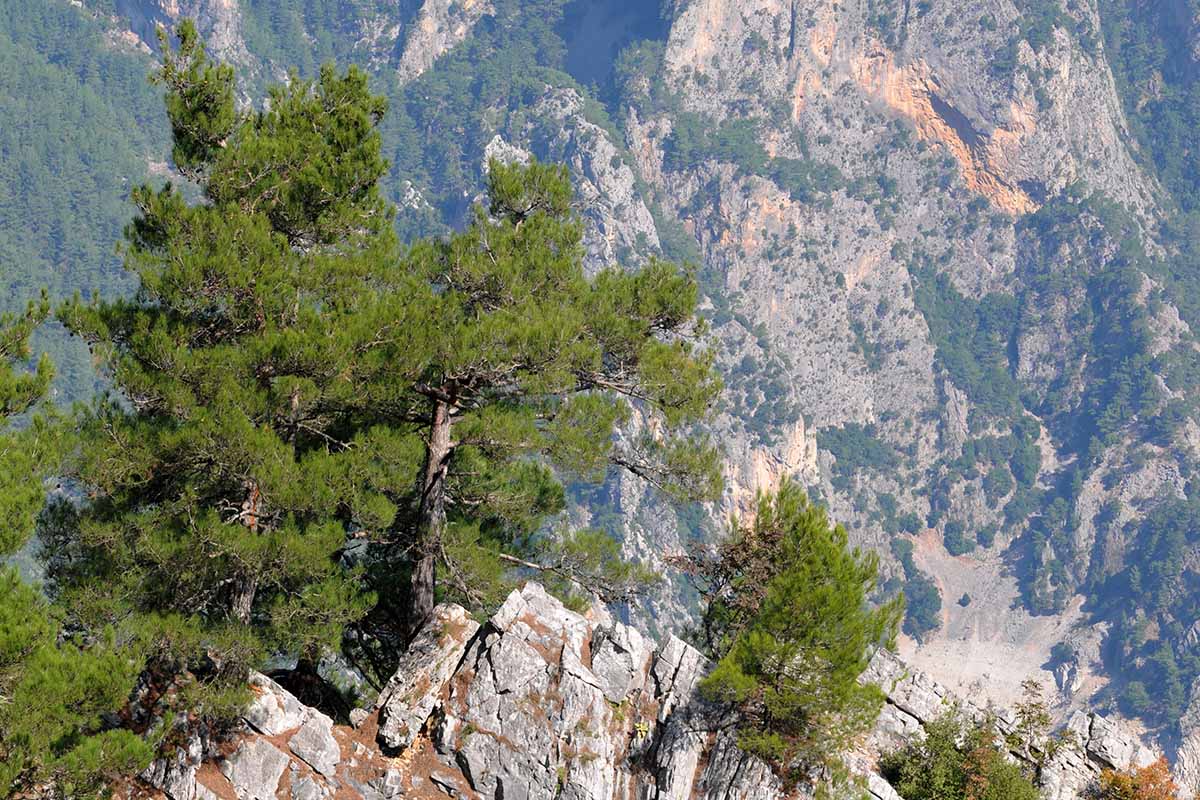
With pairs of three- to six-inch green needles and stout, reddish-brown cones three to four inches in length, this pine also flaunts gorgeous orange-red bark.
A widely-planted timber tree, P. brutia is heat and drought resistant, and it’s no slouch when it comes to looks, either.
39. Virginia
A broad, open, and pyramidal conifer from the East Coast, P. virginiana typically reaches heights of 15 to 40 feet and widths of 10 to 30 feet, and is hardy in USDA Zones 4 through 8.
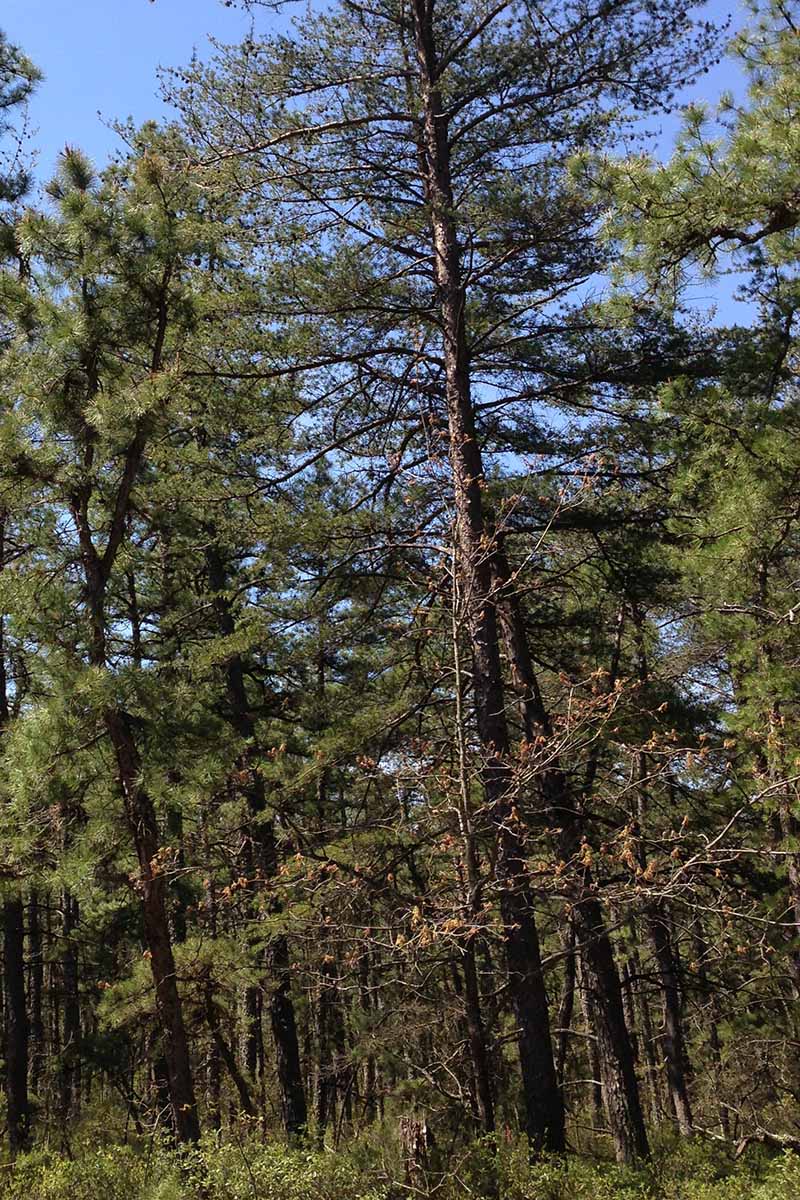
Its twisting needles in bundles of two are one and a half to three inches long with a yellow-green to dark green hue, while the dark brown, oblong cones have a similar length.
I gotta be honest: this tree isn’t the showiest of pines, but it does come in handy if you’d like to grow some vegetation on large swaths of undesirable soils, whether dry and barren or wet and clayey.
40. Western White
Native to the West Coast and British Columbia, P. monticola is capable of growing up to about 100 feet tall in cultivation, and pretty similar in form to the plain ol’ white pine, save for a narrower spread and denser foliage.

Said foliage is bundled in groups of five, with each dark blue-green needle measuring three to four inches long.
The tannish-brown cylindrical cones of this species are larger than that of P. strobus, with each reaching four to five inches in length.
If you’re looking for a white pine fit for western North America in USDA Zones 3 to 7, then you can’t go wrong with P. monticola.
41. Whitebark
P. albicaulis is an endangered mountain tree from the western US and Canada, with dark yellow-green, three-inch needles in clusters of five.
Cone-wise, you can expect to see dark brown, egg-shaped ones towards the top of the tree, each about three inches in length.
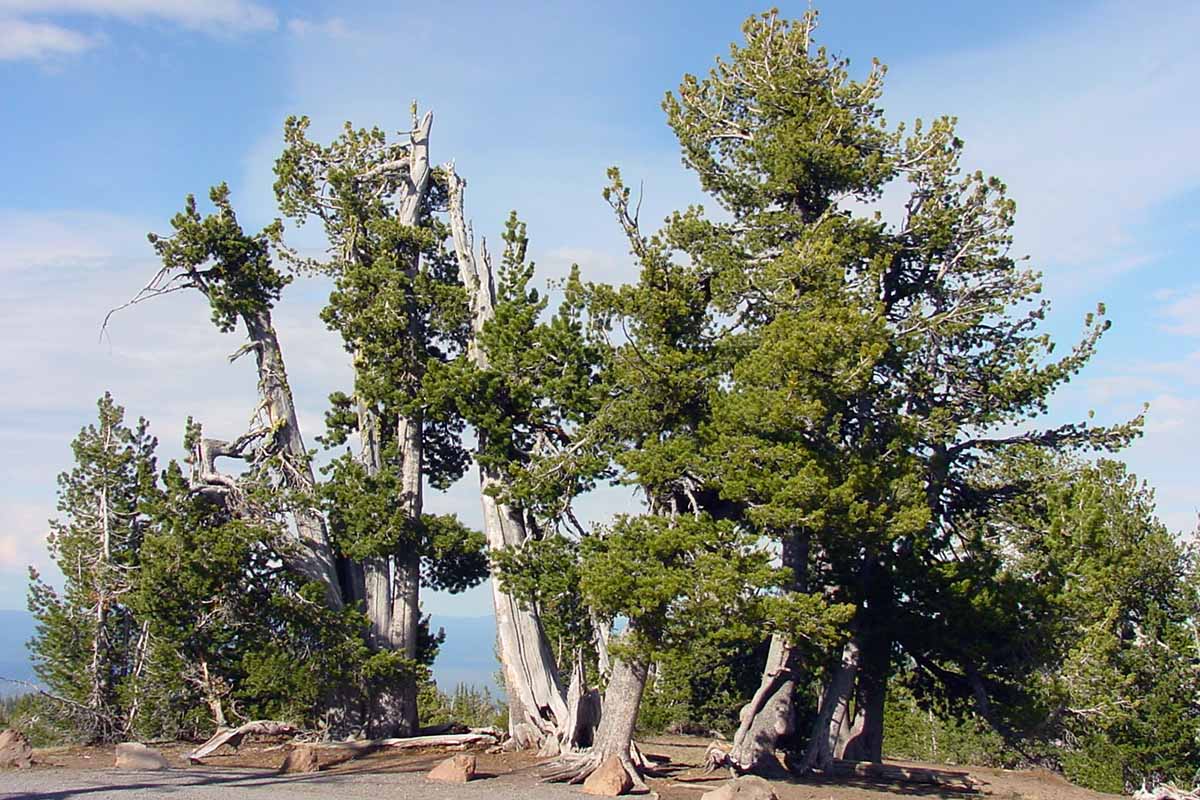
Hardy in USDA Zones 2 to 8, this tree has dimensions which vary depending on exposure.
In windy, mountainous areas, the tree may grow low to the ground and gnarly as krummholz, while specimens in more favorable sites can grow to an irregular, sprawling 100 feet.
The “whitebark” moniker is due to the light gray, almost white bark of juvenile trees.
Real Sublime Pines
Hopefully you’re not pine tree-d out after finishing this guide. And just think – that’s less than a quarter of all the Pinus species out there!
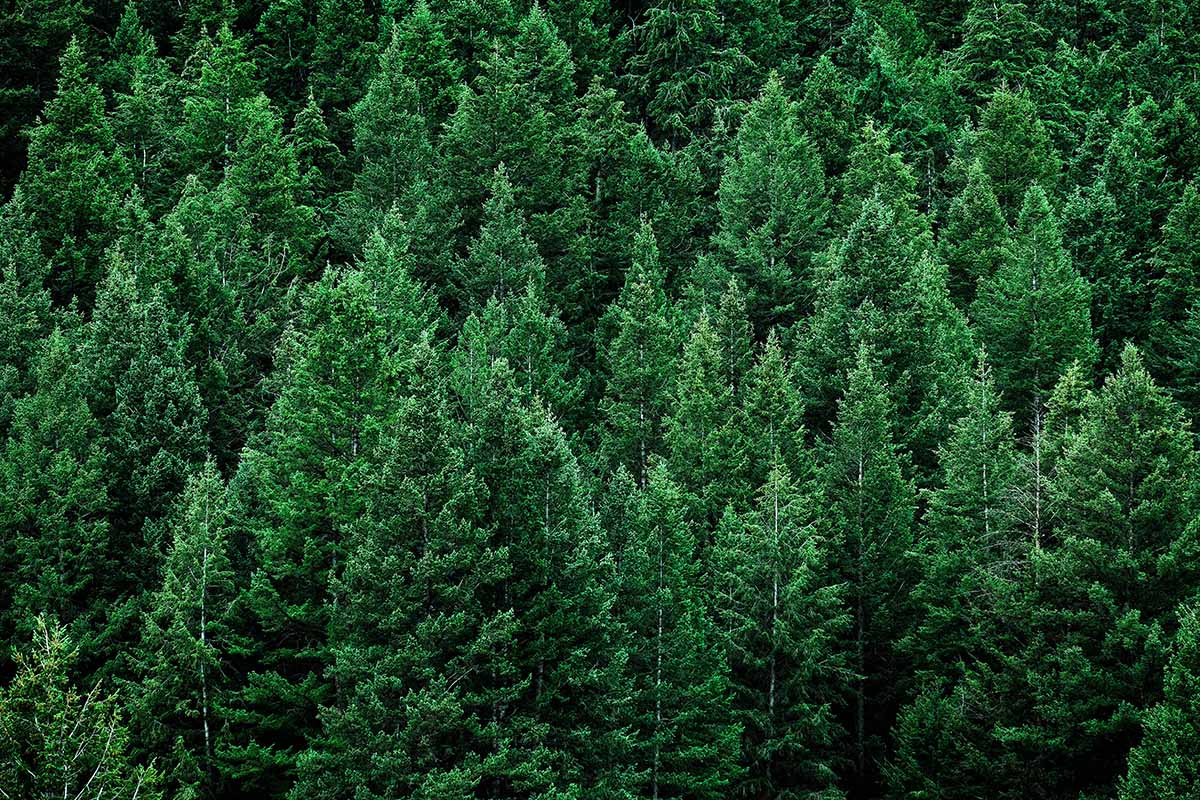
Whether you’ve got a checklist or a bucket list, going out and acquainting yourself with many different species of pine is a noble quest.
Have fun discovering the subtle variations between them and developing your own tips and tricks for differentiation!
Any species we unjustly left out? Any that you want to hype up, or that you’re growing at home? Share your favorite pines in the comments section below.
Want more info on the best landscape trees? Try these on for size:
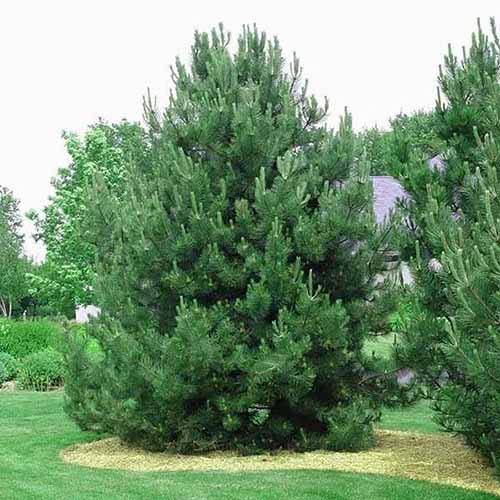

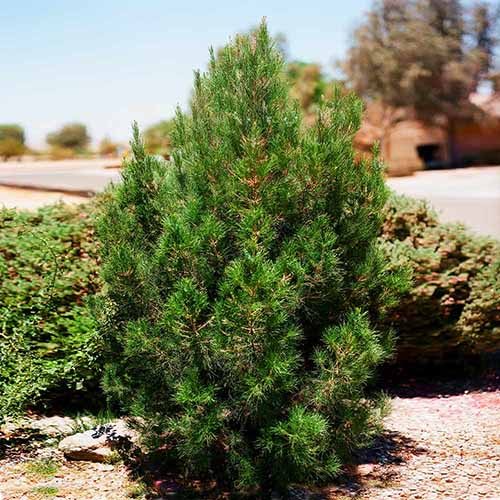
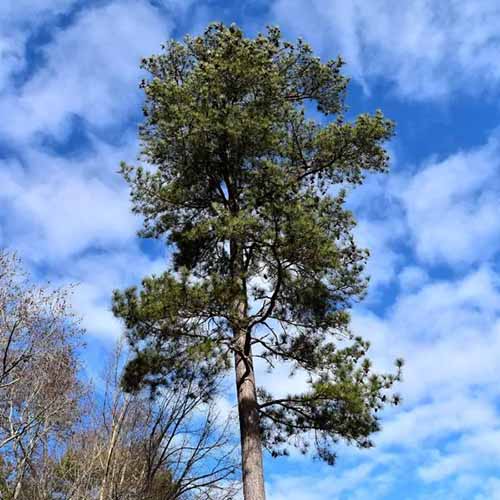
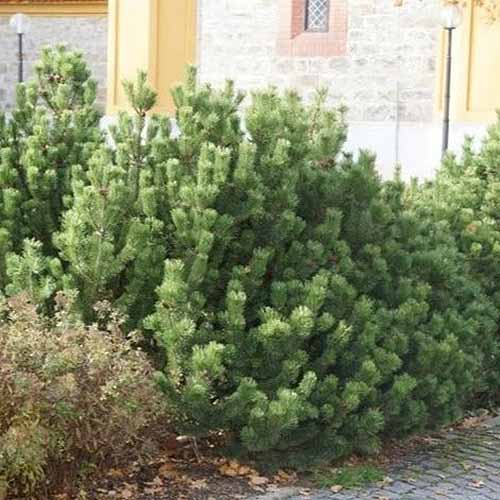
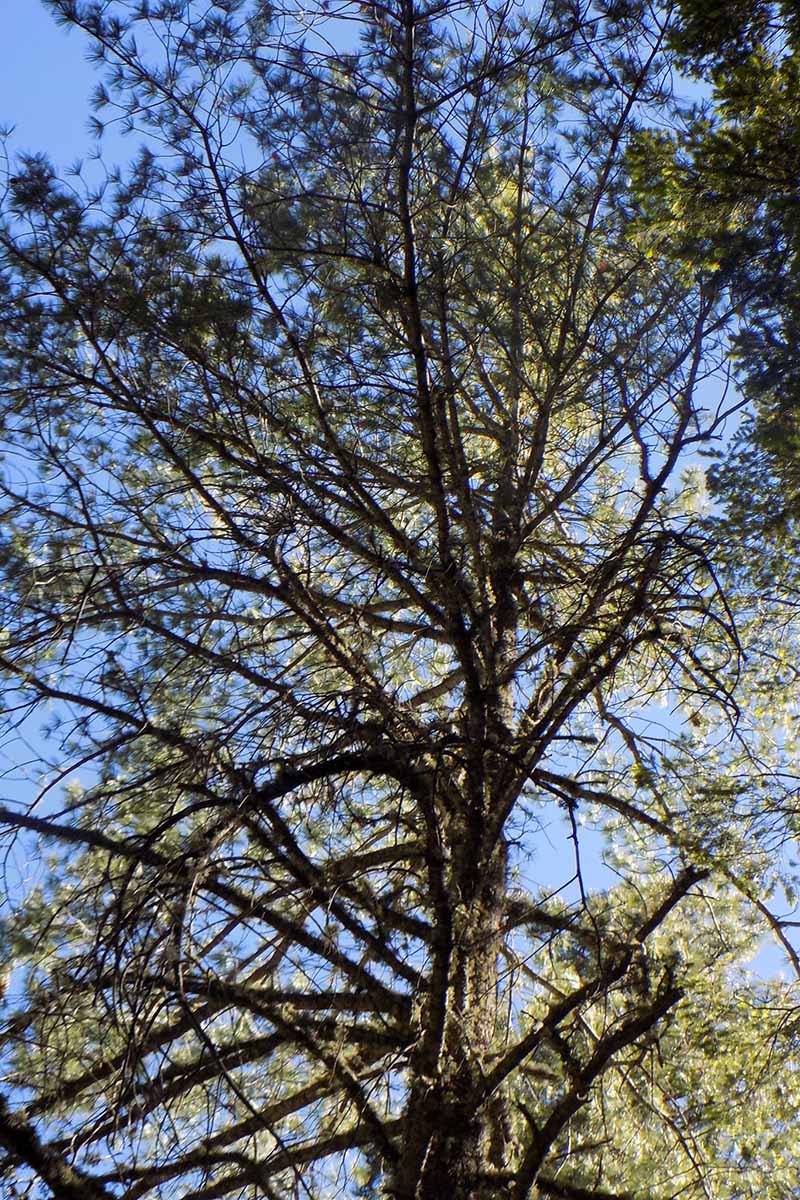
Very nice article on Pines! I have been trying to identify a short needle pine that I have growing on my property in Mississippi for several years now. However, every thing I have read narrowed it down to the Pinus Echinata (short Needle pine) but alway said that these pines do not like wet feet! And all of mine grow only down on the creek line or in the two levels that flood several times a year. So I was never sure if this was the correct tree.
Do you have pictures (one of the needles, one of a cone, one of the bark, and one capturing the whole tree), by chance? I can try to confirm your identification!